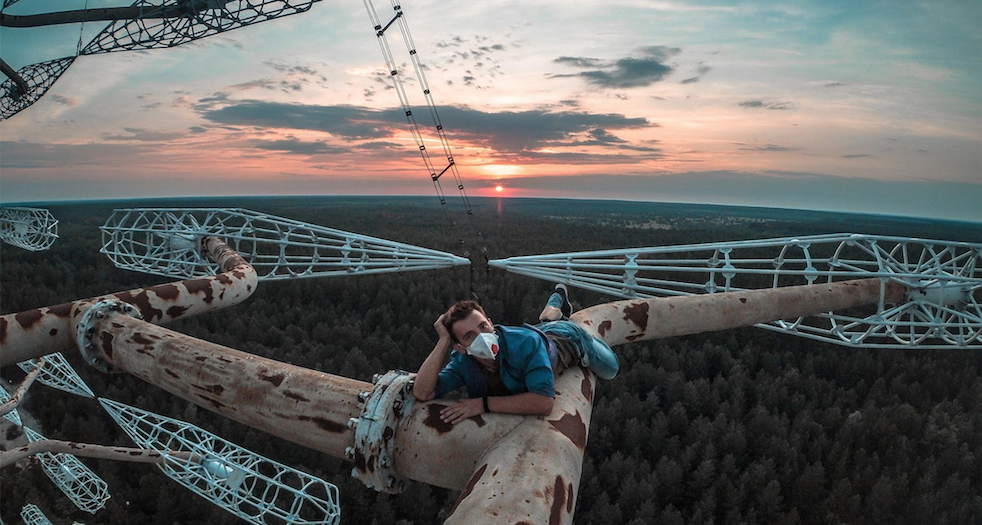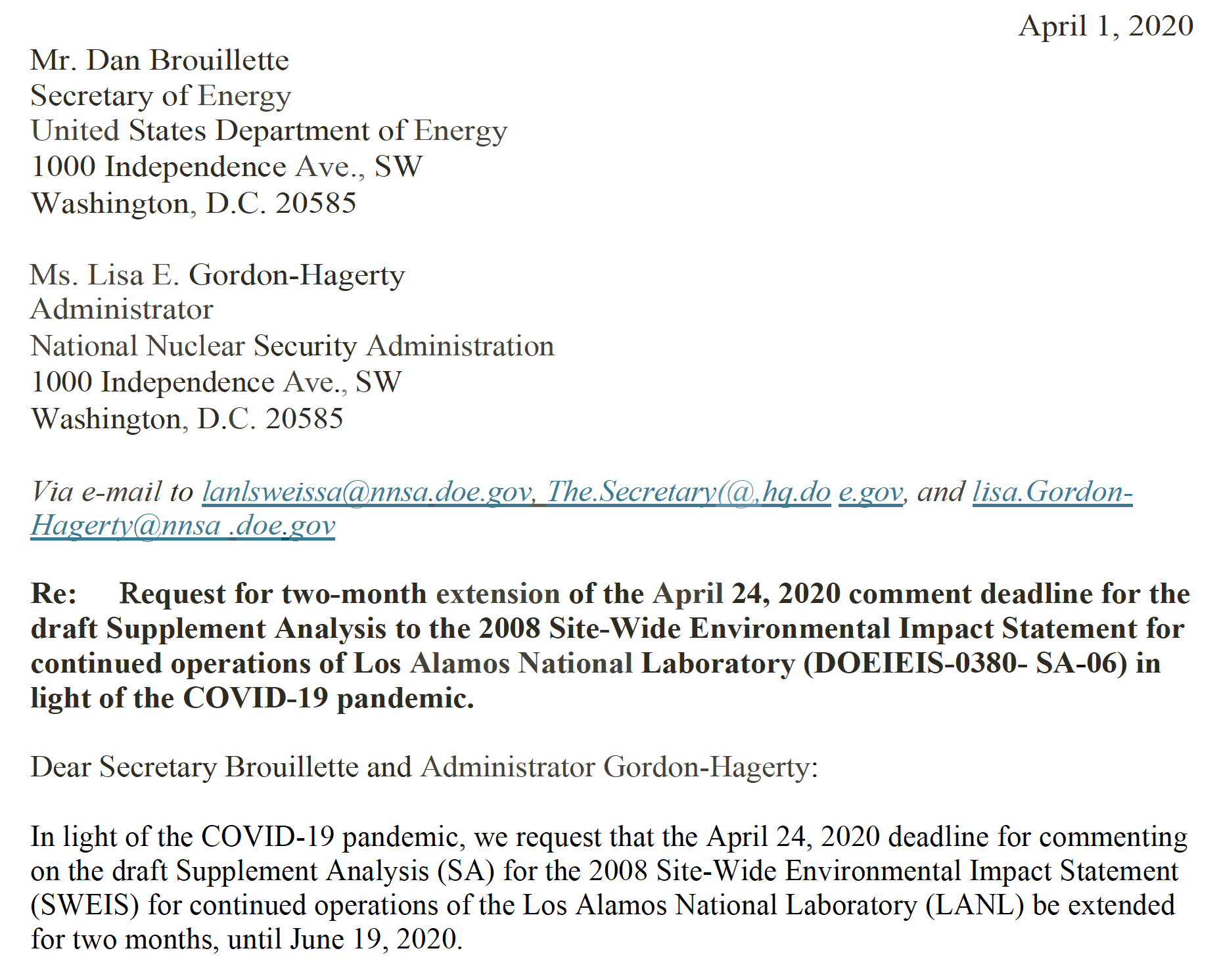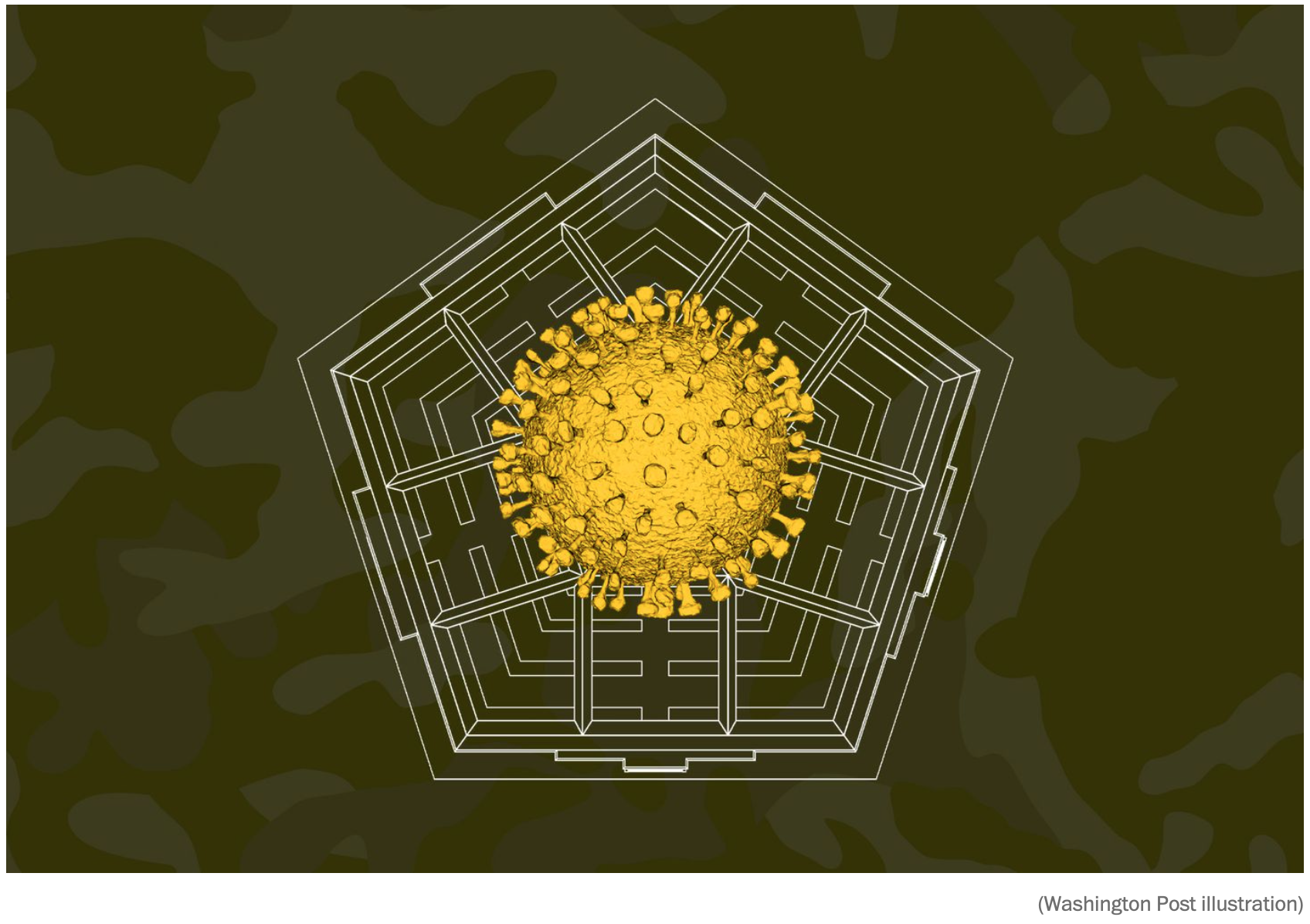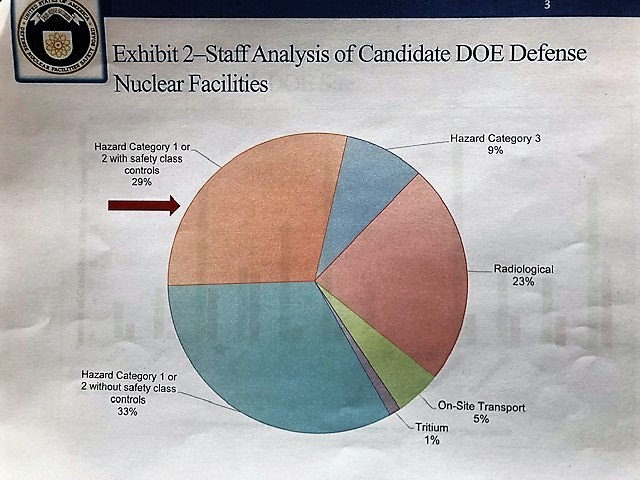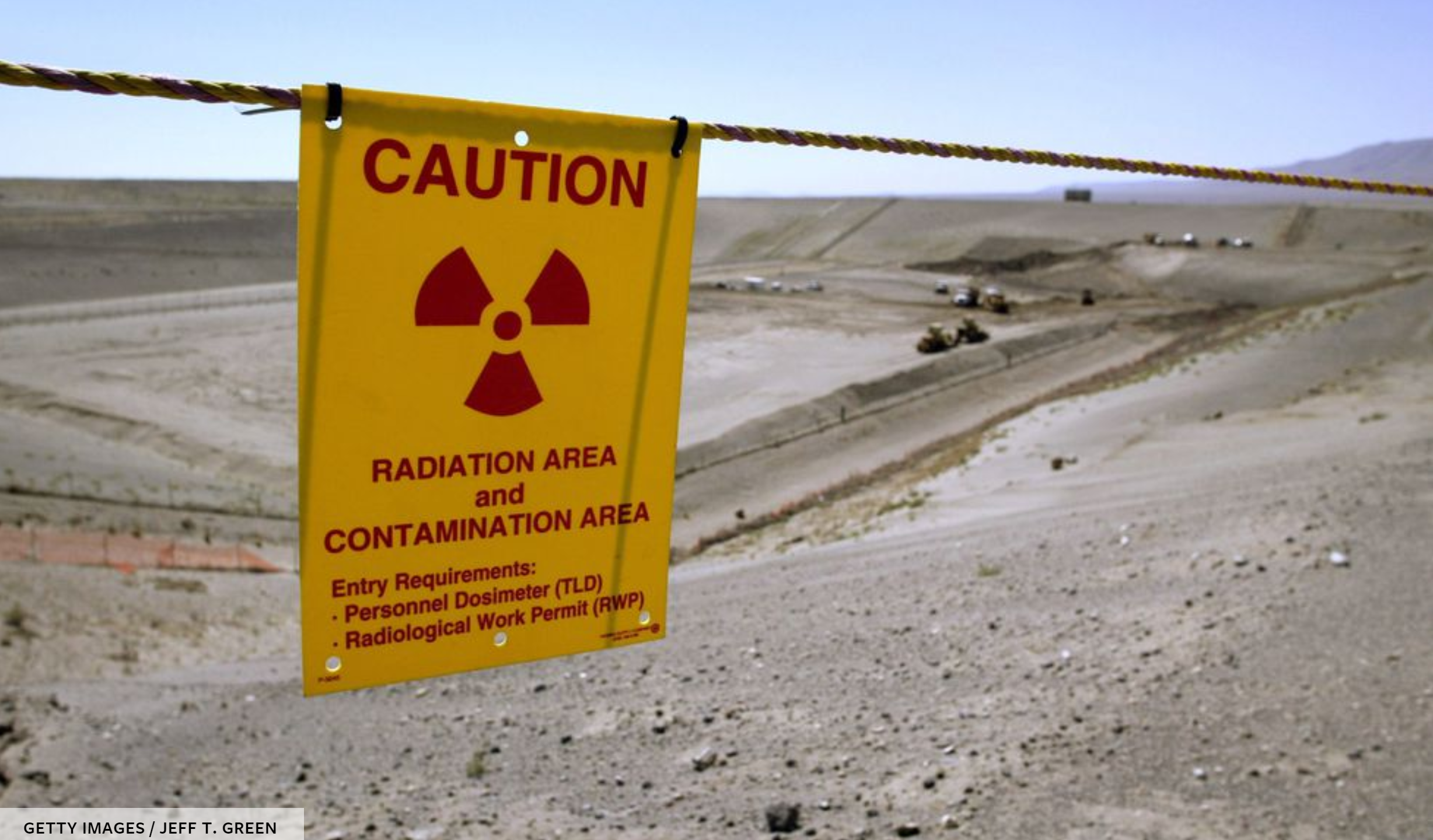Nuclear News Archives – 2020
Appeal: New Mexico ignored rules in OK of nuke site work
Susan Montoya Bryan / Associated Press | apnews.com
ALBUQUERQUE, N.M. (AP) — A watchdog group asked the New Mexico Court of Appeals to put the brakes on a key construction project at the nation’s only underground nuclear waste repository.
The Southwest Research and Information Center alleged in court documents that state environmental officials ignored existing regulations, past agency practices and case law when giving temporary approval for contractors to begin building a new ventilation shaft at the Waste Isolation Pilot Plant.
WIPP faces security, space challenges
The experts are recommending the Energy Department conduct an environmental review to consider the full effects of the plan on the repository, which plays a key role in the nation’s multibillion-dollar program to clean up Cold War-era waste from decades of nuclear research and bomb making.
Susan Montoya Bryan / Associated Press | santafenewmexican.com
ALBUQUERQUE — Security and the availability of space at the U.S. government’s only underground nuclear waste repository are among the challenges identified by a group of scientists and other experts tasked by Congress to review the viability of a plan to dispose of tons of weapons-grade plutonium at the desert location.
The National Academies of Sciences, Engineering, and Medicine on Thursday released its final report on the plan, which would cost an estimated $18 billion over three decades to dilute a few dozen metric tons of plutonium and ship it to the Waste Isolation Pilot Plant in southeastern New Mexico.
STALKING CHERNOBYL: exploration after apocalypse (Trailer) from Cultures of Resistance Films on Vimeo.
“A vivid and compelling film… where a dose of adrenaline matters more than a dose of radiation.” — Beyond Nuclear International
“Stalking Chernobyl: Exploration After Apocalypse” (2020) is a fascinating documentary from Cultures of Resistance Films that offers a unique portal into the clandestine culture that has developed around the Chernobyl Exclusion Zone three decades after the world’s worst nuclear disaster.
Defense budget cuts following the pandemic will be hard to swallow
BY: DOV S. ZAKHEIM | thehill.com

Congress has appropriated more than $2.25 trillion to counter the impact of COVID-19 on American families and the economy. It is likely to spend even more once legislators return from their recess in early May. This unprecedented level of expenditure is resulting in a massive deficit and national debt levels that are likely to exceed 120 percent of the nation’s gross domestic product, especially as GDP growth itself is no longer a foregone conclusion. In turn, there will be renewed pressure on the defense budget, which already is forecast to have no real growth in fiscal year 2021.
NNSA lengthens comment period for Savannah River pit production environmental study
BY: COLIN DEMAREST | aikenstandard.com
The National Nuclear Security Administration has extended the period in which it is taking comments and input on its draft review of the environmental impacts of plutonium pit production at the Savannah River Site.

Feedback can now be submitted through June 2. The previous deadline was May 18.
Comments concerning the Savannah River Site plutonium pit production draft environmental impact statement can be emailed, the preferred method, to NEPA-SRS@srs.gov. Comments can also be mailed to Jennifer Nelson, NEPA Document Manager, National Nuclear Security Administration, Savannah River Field Office, P.O. Box A, Aiken, S.C. 29802.
“STALKING CHERNOBYL” Q&A EVENT ON APRIL 26
On Sunday, 26 April 2020 the UN-designated International Chernobyl Disaster Remembrance Day, “Stalking Chernobyl” director Iara Lee hosted a live online Q&A session moderated by Jodie Evans, CODEPINK founder, with:
• Cindy Folkers, Radiation & Health Specialist from Beyond Nuclear International
• Sergii Mirnyi, scientist/tour operator from Chernobyl Tours
• Vitaly Servetnik from Friends of the Earth/Russian Socio-Ecological Union
• “Stalking Chernobyl” editor Dimo Petkov, cameraman Anton Fedorrko, co-producer Oleg Shalashov
• Dominik Orfanus, Yurij Syrcek, and Igor Pasko from the ; Chernobyl Welcome Tour Company
• Vladislav Voznjuck from the stalker/tour group DiggTour
• Lucas Brunelle, extreme cyclist and creator of ” Lucas Brunelle Goes To Chernobyl”
The discussion was livestreamed to Cultures of Resistance’s Facebook page at https://www.facebook.com/CulturesOfResistance/ and YouTube channel at https://www.youtube.com/user/CulturesofResistance
North Korea is advancing its nuclear program and increasing illicit trade, new UN report says
North Korea is advancing its nuclear program and increasing illicit trade in new and more opaque ways, according to a 267-page U.N. report that provides surveillance photos and new evidence.
The annual report, produced by sanctions monitors called the “Panel of Experts,” is a product of the U.N. Security Council. The purpose of the report is to offer recommendations on how to hold North Korea accountable for skirting restrictions imposed by U.N. sanctions since 2006, that are designed to curtail the nation’s nuclear weapons program.
New Mexico’s U.S. senators request more time for comment on LANL pit production
A letter from 120 activist groups and citizens has prompted the state’s two U.S. senators to ask federal agencies to give the public more time to comment on possible environmental effects of pit production at Los Alamos Laboratory.
ARTICLE BY: SCOTT WYLAND | santafenewmexican.com
U.S. Sens. Tom Udall and Martin Heinrich wrote to the National Nuclear Security Administration on Wednesday, urging it to extend the public comment period to June 19 on its environmental study of the lab’s future production.
They cited challenges presented by the COVID-19 crisis and referred to a letter they received from activists who had asked for the June 19 extension.
“We continue to believe that providing the public ample opportunity to comment on environmental documents … provides an invaluable source of expertise to NNSA’s decision-makers, enhances transparency and ensures accountability,” the senators wrote. “We respectfully request that you give careful consideration to extending the public comment period.”
60+ Orgs to Congress: No More COVID-19 Money For the Pentagon
 commondreams.com WASHINGTON – Congressional leadership must ensure that future COVID-19 response bills do not include any additional funds for the Pentagon, 61 organizations representing pro-diplomacy, veteran, faith, environmental, and anti-war communities, and more, from across the country, said in a letter today.
commondreams.com WASHINGTON – Congressional leadership must ensure that future COVID-19 response bills do not include any additional funds for the Pentagon, 61 organizations representing pro-diplomacy, veteran, faith, environmental, and anti-war communities, and more, from across the country, said in a letter today.
The letter, led by Win Without War, states that the Pentagon’s $756 billion budget provides more than enough resources to respond to the crisis caused by the pandemic. While there may be a limited role for the Pentagon in responding to the crisis — by, for example, aiding with construction of hospitals — the letter’s signers agree that these activities should be funded by the already-oversized Pentagon budget.
Letter to NNSA from NM Senators Udall & Heinrich Calling for Extended Comment Period on Expanded Plutonium Pit Production
[embeddoc url=”https://nukewatch.org/wp-content/uploads/2020/04/Senators-letter-to-NNSA-4-22.pdf” download=”all” viewer=”google”]
There’s a new world super-villain (COVID-19), it’s time for nuclear disarmament
Dingiswayo Mokoena | diggers.news
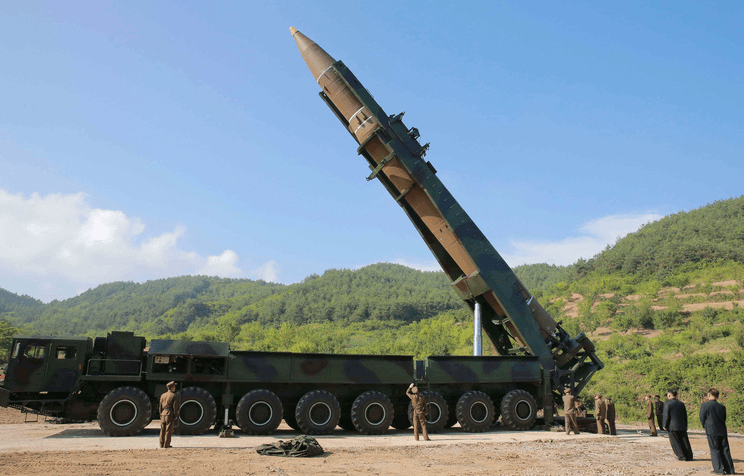
THE Associated Press (AP) this week reported that a barrage of North Korean missiles fired from both the ground and fighter jets splashed down on the waters off the peninsular’s east coast on Tuesday. AP further reports that North Korea also launched several Sukhoi-class fighter jets that fired an unspecified number of air-to-surface missiles toward the North’s eastern waters. According to a South Korean defence official, North Korea seems to be resuming its military drills that it had scaled back due to concerns about the coronavirus pandemic. This, consequently, pushing back the deadlocked denuclearisation negotiations fostered by the United Nations.
How the Military-Industrial Complex Is Using the Coronavirus
Arms industry lobbyists are addressing this pandemic and preparing for the next by pushing weapons sales.
ARTICLE BY: SCOTT WYLAND | santafenewmexican.com

There’s a battle brewing for the future of national security spending.
On one side, there’s a growing bipartisan consensus that the coronavirus has fundamentally changed the way we should think about national security. Ben Rhodes, former deputy national security adviser in the Obama White House, recently argued in The Atlantic that we have to rethink the orientation and priorities of our government, and “it makes no sense that the Pentagon budget is 13 times larger than the entire international-affairs budget, which funds the State Department, USAID, and global programs at other agencies.”
Kori Schake, the director of foreign and defense policy studies at the conservative American Enterprise Institute, said the bottom line is that “we’re going to see enormous downward pressure on defense spending because of other urgent American national needs like health care.”
SFCC, Los Alamos lab join to offer machinist program
BY DILLION MULLIN | santafenewmexican.com
Santa Fe Community College and Los Alamos National Laboratory announced last week a new collaboration to revamp the college’s machinist program.
With the campus providing the latest equipment and curriculum and the lab offering hands-on internships, community college President Becky Rowley said she hopes the first group of students can begin working toward a certificate or associate’s degree in the overhauled program this fall.
Congress Should Hit Pause On The New Intercontinental Ballistic Missile
Within just a few years, the estimated cost of GBSD skyrocketed from $62 billion to $85 billion to $150 billion, and is now likely to be even higher.
ARTICLE BY: MATT KORDA | forbes.com
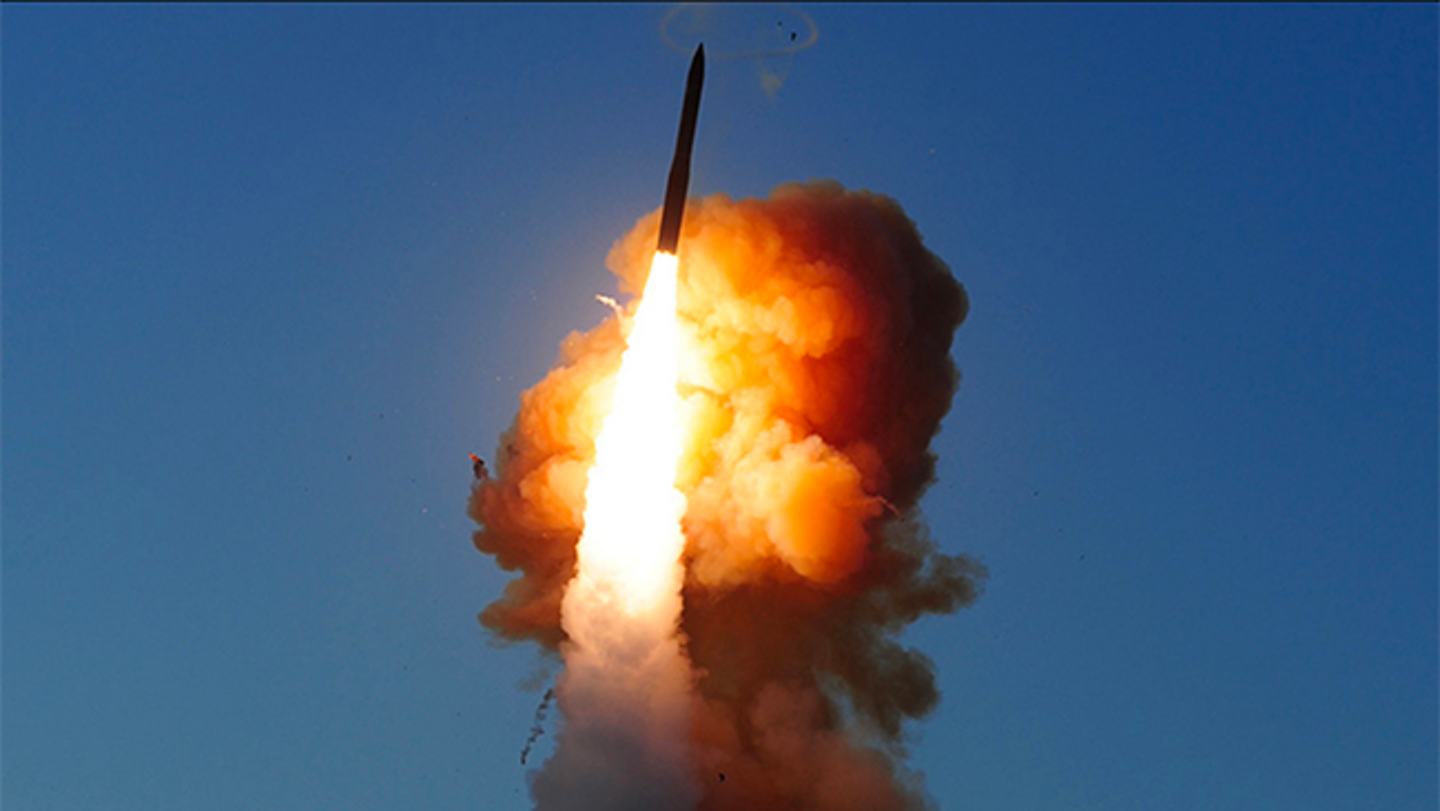 Although the COVID-19 pandemic has caused daily life to grind to a halt, it has had little effect on the military-industrial complex––which, incredibly, appears to be speeding up.
Although the COVID-19 pandemic has caused daily life to grind to a halt, it has had little effect on the military-industrial complex––which, incredibly, appears to be speeding up.
Late last week, the Air Force revealed that it was considering awarding one of its most important contracts––the massive Engineering and Manufacturing Development contract for the next generation of intercontinental ballistic missiles––even earlier than expected, in an attempt to lock the program in as soon as possible.
This news comes only two months after the release of the President’s FY21 budget request, which also raised eyebrows given the dramatic increase to the nuclear weapons budget––and particularly, the tripling of the ICBM budget.
Stalking Chernobyl
Chernobyl is a place of loss and abandonment. The Zone is radioactive. So why do people flock there today? Iara Lee’s fascinating documentary goes with them to find out, and reminds us about life there before the April 26, 1986 nuclear disaster.
ARTICLE BY: LINDA PENTZ GUNTER | beyondnuclear.org
For most of us, Pripyat — the Ukrainian city that has become an iconic symbol of forced abandonment — summons images of drab, Soviet decay. Pripyat is a place of ghastly tower blocks, rusting playgrounds, a deserted Ferris wheel and peeling paint, its workforce trudging like automata to toil at the doomed Chernobyl nuclear power plant just 2.5km away.
But in the opening sequence of Iara Lee’s new documentary — Stalking Chernobyl; exploration after the apocalypse — we see a very different Pripyat, before the April 26, 1986 nuclear disaster. It is a place of singing and roses, swimming pools and picnics, and dancing babushkas.
And then, as someone in the film says, “On April 26, what had once been our pride became our grief.”
The Women Who Told Chernobyl’s Story – And the Charity that Sees Those Consequences First Hand
Three great women writers have done so much to tell the story of Chernobyl. Their focus was not on the accident itself, but its impact on the people of Belarus and Ukraine.
ARTICLE BY: LINDA WALKER | beyondnuclear.org
Alla Yaroshinskaya
When reactor No 4 at the Chernobyl Nuclear Power Plant blew up in the early hours of 26th April 1986, it threw millions of curies of radioactive materials into the air, forming a 2km high plume.
Amongst the most dangerous isotopes it released were iodine 131, caesium 137 and strontium 90.
But according to Alla Yaroshinskaya, a journalist whose tenacity was responsible for revealing much of the subsequent cover-up, the most dangerous substance to escape from the mouth of the reactor did not appear on the periodic table. It was Lie-86, a lie as global as the disaster itself.
Continue reading
Northrop could get $85 billion award to make next-gen ICBMs sooner than expected
Within just a few years, the estimated cost of GBSD skyrocketed from $62 billion to $85 billion to $150 billion, and is now likely to be even higher.
ARTICLE BY: VALERIE INSINNA| defensenews.com
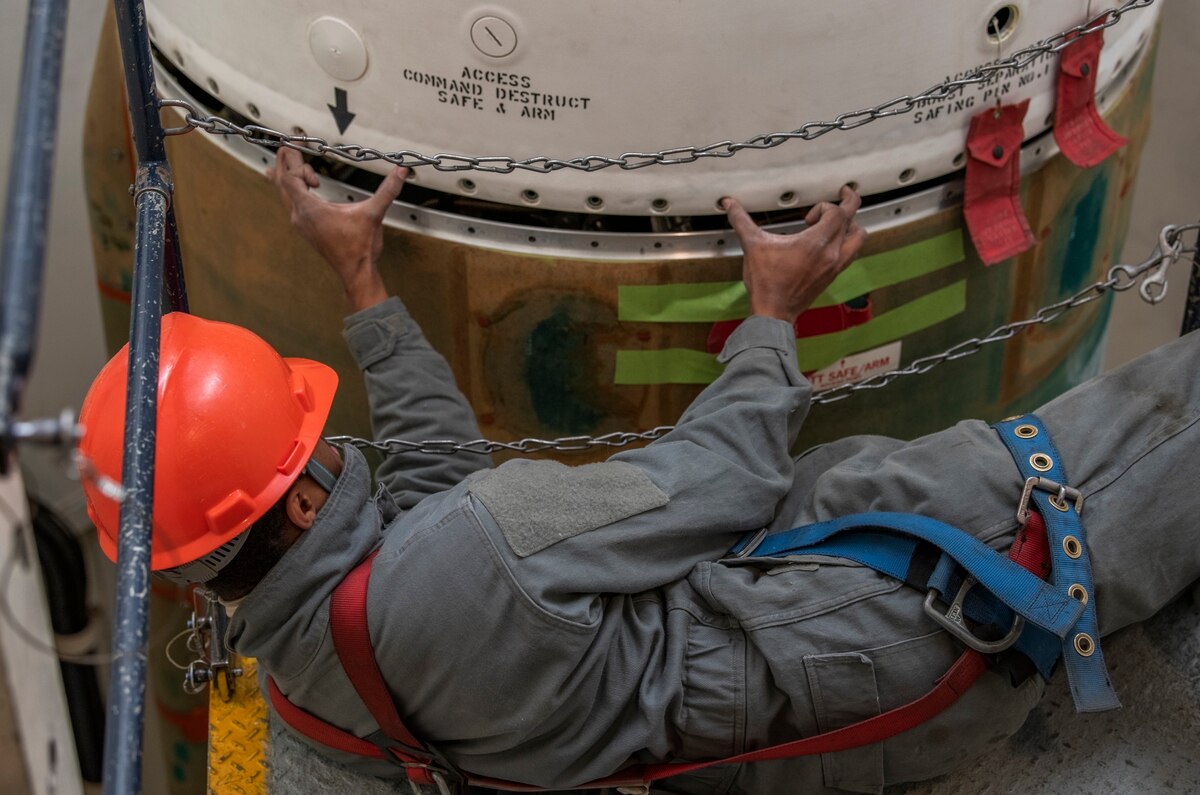
WASHINGTON — An award for the U.S. Air Force’s Ground Based Strategic Deterrent program is slated to be granted by the end of September, but it could happen earlier, the service’s acquisition executive said Thursday.
“I think early award is possible on GBSD,” Will Roper told reporters during a teleconference. “I’m very hopeful, but because GBSD has a large component of classified work, that team is having to go in and maintain workforce in our [sensitive compartmented information facilities] and in our classified spaces. So we’re watching very carefully to make sure the installations are open to allow that work.”
As the sole bidder on the GBSD program, Northrop Grumman is anticipated to win an estimated $85 billion to design and build the Air Force’s next-generation intercontinental ballistic missiles.
Spent Nuclear Fuel from Germany to SRS? Dumping-for-Profit Scheme Drags On & On & Should be Terminated
FOIA Documents Confirm Profiteers Still Pursuing Scheme to Dump Highly Radioactive German Spent Fuel (Graphite “Pebbles”) at SRS – Should be Terminated
 SRS and the German entity Jülicher Entsorgungsgesellschaft für Nuklearanlagen (JEN) are still working on the scheme to import German highly radioactive graphite spent fuel from the Jülich, Germany storage site to SRS for reprocessing and dumping. That this bad idea to import the nuclear waste in large CASTOR casks is continuing has been confirmed in documents obtained by SRS Watch in response to a Freedom of Information Act (FOIA) request received on April 7, 2020.
SRS and the German entity Jülicher Entsorgungsgesellschaft für Nuklearanlagen (JEN) are still working on the scheme to import German highly radioactive graphite spent fuel from the Jülich, Germany storage site to SRS for reprocessing and dumping. That this bad idea to import the nuclear waste in large CASTOR casks is continuing has been confirmed in documents obtained by SRS Watch in response to a Freedom of Information Act (FOIA) request received on April 7, 2020.
SRS Watch first alerted the public in 2013 – at a SRS Citizens Advisory Board meeting – that the US-Germany waste deal was at hand, forcing SRS to admit that was indeed the case. Pursuit of he deal has been dragging on since 2012.
Continue reading
How nuclear forces worldwide are dealing with the coronavirus pandemic
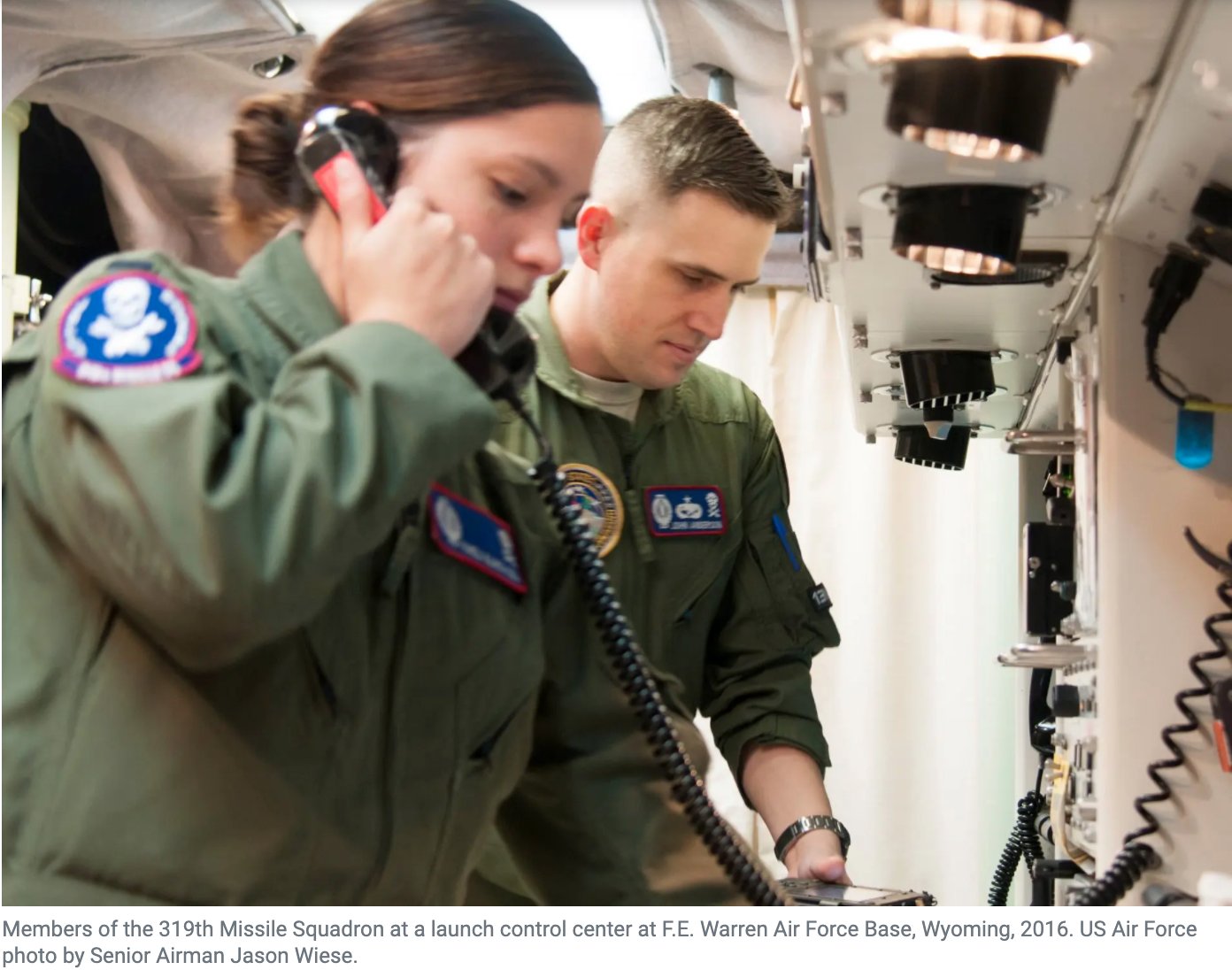
In recent weeks, the coronavirus outbreak has elicited at least a few tone-deaf comments from top US defense officials about the readiness of their nuclear forces. In mid-March, the commander of US Strategic Command, Adm. Charles Richard, reassured his audience that the United States’ nuclear forces had not been adversely affected by the pandemic and that they “remain ready to execute the nation’s strategic deterrence mission.” In effect, Adm. Richard was telling his audience that the United States was still capable of launching a massive nuclear retaliation that would undoubtedly kill millions. Similarly, at the beginning of April, the commander of the US Air Force’s Global Strike Command told Popular Mechanics that, despite the COVID-19 outbreak, “its nukes are still ready to fly.” These officials were apparently oblivious to the notion that, with the pandemic already causing enough fear and dread on its own, now may not be the best time to remind the general public about other ways the world could end.
What the United States loses by quitting the Open Skies treaty, in one chart
Reports emerged this week that the White House may be moving “soon” on withdrawing from the Open Skies treaty, a nearly two-decade-old agreement that allows 34 countries to fly and share reconnaissance missions over each other to promote military cooperation and transparency.

Last month, defense secretary Mark Esper said he was freezing a long-overdue replacement of the aging OC-135B aircraft used for flights under the treaty. “Until we make a final decision on the path forward, I am not prepared to recapitalize aircraft,” Esper told the Senate Armed Services Committee. Although more than 1,500 observation flights have been flown since the treaty took effect in 2002, vocal Republican opponents like Sens. Tom Cotton, Richard Burr, and Ted Cruz claim its benefit is “marginal” because US satellites make aerial imagery unnecessary, and the United States gives up more to its adversaries under the treaty than it gains. Their criticism extends from complaints about the costs of the OC-135B upgrade to protests over Russian compliance with the treaty—specifically, restrictions on missions flown over Kaliningrad and along Russia’s border with Abkhazia and South Ossetia. Cotton and Cruz introduced a resolution calling for withdrawal in October.
NNSA Production Sites Hunker Down Amid COVID-19 Crisis
All but one of the main Department of Energy nuclear weapons production sites have now hunkered down into minimum mission-critical operations because of COVID-19, keeping only the personnel needed to assemble nuclear weapons and components, maintain key infrastructure, or provide security.
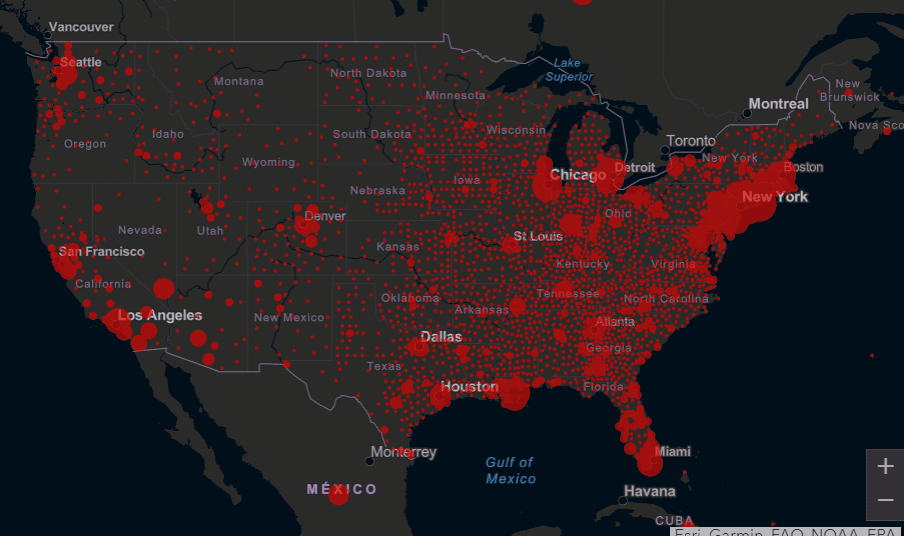
The Pantex Plant in Amarillo, Texas, and the Y-12 National Security Complex in Oak Ridge, Tenn., both announced the switch to minimum mission-critical operations this week, joining the Savannah River Site of Aiken, S.C., which adopted a similar posture late last month.
Only the Kansas City National Security Campus, which sits in the middle of a far worse outbreak than Pantex, Y-12, and Savannah River combined, had not gone down to the minimum mission-critical level of operations. The plant, which makes the non-nuclear parts of nuclear weapons, has reduced the number of people onsite since the outbreak and confirmed its first case of COVID-19 this week, saying Friday an employee “recently tested positive.”
The Coronavirus Can’t Stop America’s Nukes
Relying on a high-state of readiness, the nuclear triad is under threat from the coronavirus. But the head of Global Strike Command tells Popular Mechanics that its nukes are still ready to fly.
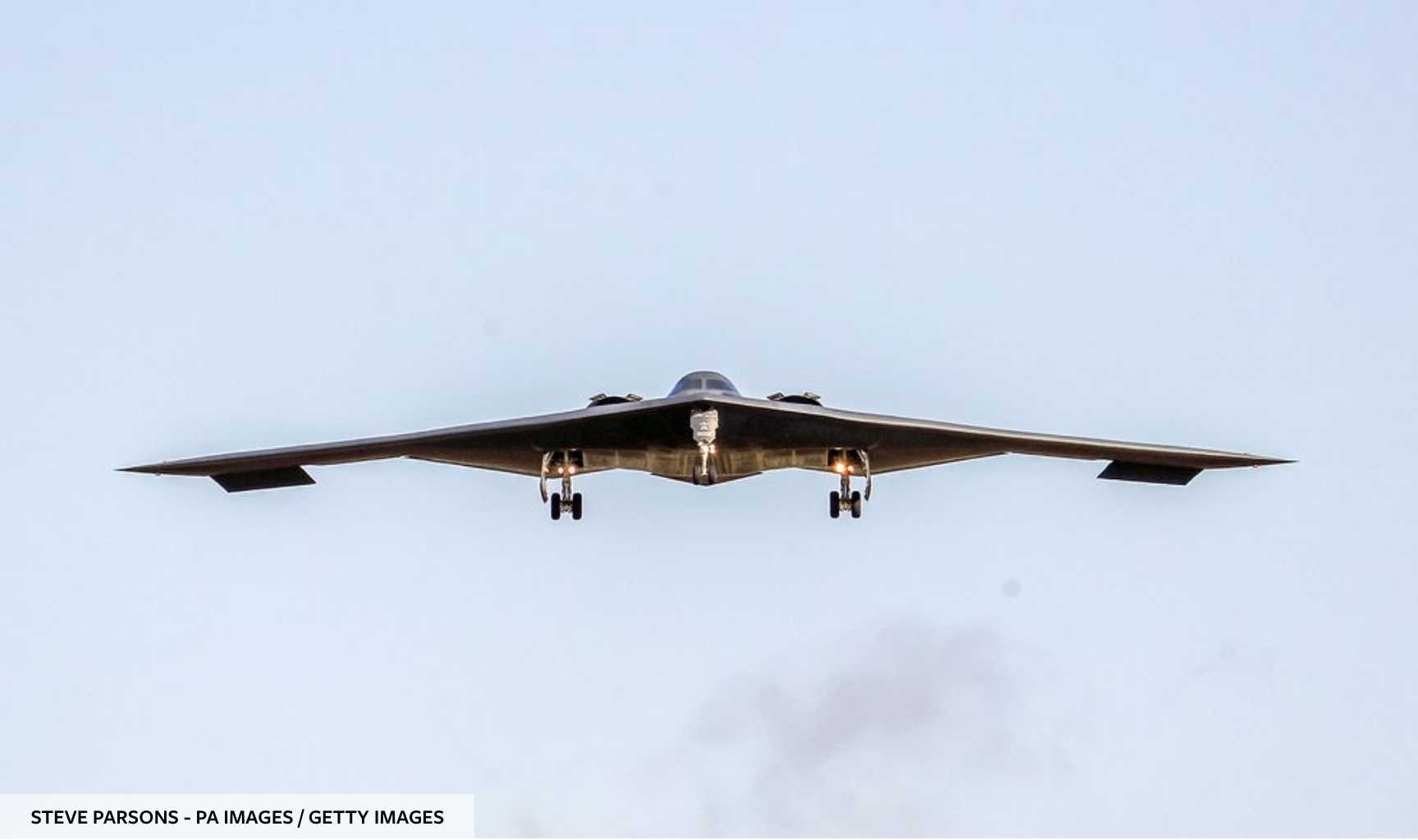
As the world fights against the COVID-19 pandemic, nuclear weapons have taken a backseat in most people’s minds. But for Global Strike Command (AFGSC)—the Air Force unit in control of two of the three legs of America’s nuclear triad—their mission remains top priority.
And it’s an unforgiving business. Nuclear deterrence requires extreme levels of readiness among pilots, maintenance crews, and security teams. Adversaries that don’t think the U.S. can respond with conventional bombing strikes or nukes could be emboldened to act aggressively.
OAK RIDGE ENVIRONMENTAL PEACE ALLIANCE CALLS FOR PUBLIC HEARING ON DOCUMENT ANALYZING HEIGHTENED EARTHQUAKE RISK AT NUCLEAR BOMB PLANT, ASKS FOR EXTENSION OF COMMENT PERIOD DUE TO PANDEMIC
The Oak Ridge Environmental Peace Alliance today filed a formal request with the Department of Energy and the National Nuclear Security Administration seeking an indefinite extension of the comment period and a public hearing on the NNSA’s study of earthquake and accident consequences at the Y-12 Nuclear Weapons Complex in Oak Ridge, Tennessee.
Citing a letter from twenty-two Senators that called for an indefinite extension of public comment periods until such time as the COVID-19 national state of emergency has ended, OREPA asked NNSA Administrator Lisa Gordon-Hagerty and Secretary of Energy Dan Brouilette to recognize the significant disruption in public and private life due to the COVID-19 pandemic and to respond appropriately.
After Decades of Secrets, Rocky Flats Should Still Give Pause
FOR MORE INFORMATION: The rockyflatsambushedgrandjury.com web site offers many Resource Materials in support of The Ambushed Grand Jury non-fiction and profit book about the Rocky Flats criminal investigation and Special Federal Grand Jury investigation, including pictures and videos.
Chernobyl fire: Huge forest blaze moves within one kilometre of abandoned nuclear plant
A forest fire that has raged in Ukraine for more than a week has spread to within a kilometre of the Chernobyl power plant, environmental campaigners have warned.
Footage of the region has shown fires raging through the 30km exclusion zone set up around the site of the worst nuclear disaster in history, with black smoke billowing into the sky as firefighters attempting to beat back the blaze from helicopters.
Lawmakers cry foul as Trump considers retreating from Open Skies Treaty
Supporters of a treaty meant to reduce the risk of accidental war are sounding the alarm President Trump could withdraw from the agreement as the world’s attention is consumed by the coronavirus pandemic.
BY REBECCA KHEEL | thehill.com
The Open Skies Treaty allows the pact’s 35 signatories, including the United States and Russia, to fly unarmed observation flights over each other’s territories with the intention of providing transparency about military activities to avoid miscalculations that could lead to war.
Administration officials insist a review is ongoing as four top Democrats warned this past week that withdrawing “in the midst of a global health crisis is not only shortsighted, but also unconscionable.”
“We are deeply troubled by the Trump administration’s sustained push to withdraw from the Open Skies Treaty and we reject the administration’s arguments for pursuing withdrawal,”
Continue reading
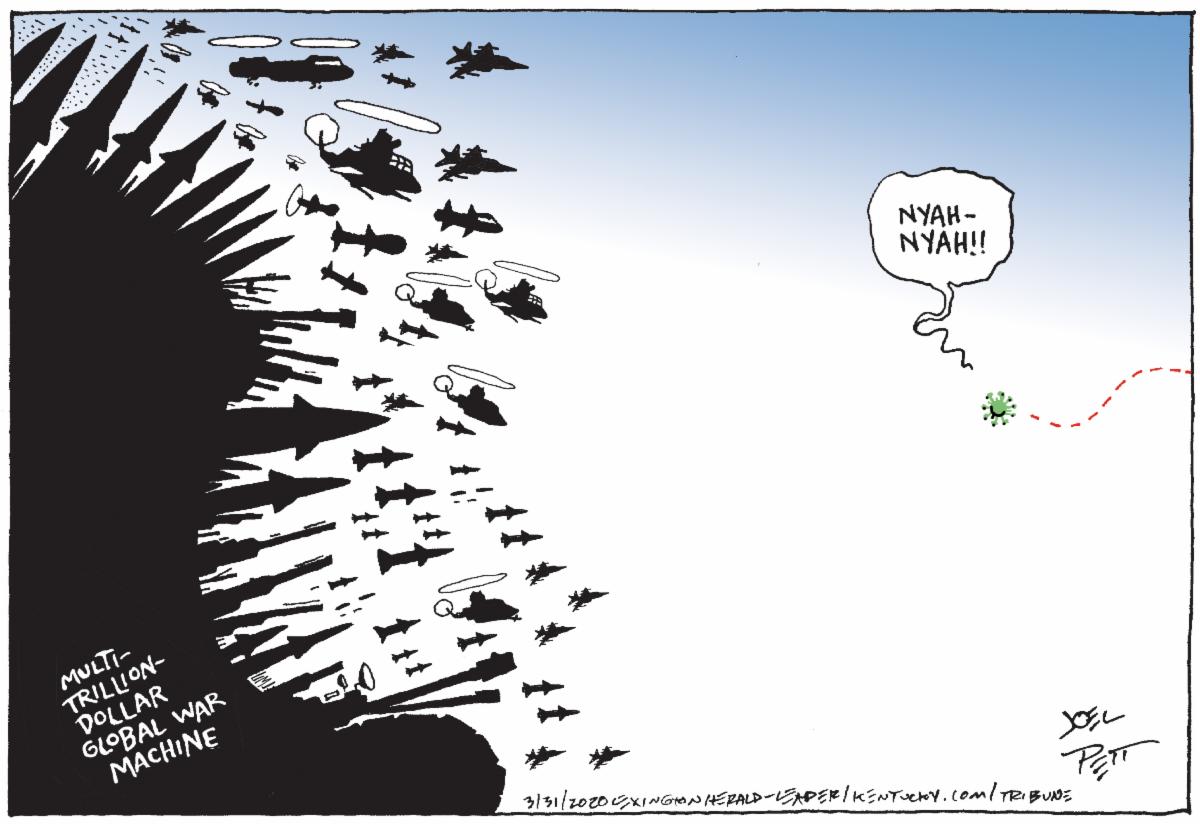
Researchers Find Plutonium Particles in Soil Near Rocky Flats
“Researchers from Northern Arizona University (NAU) found extensive plutonium “hot” particles in soil near the former Rocky Flats nuclear site. Particles this size can be inhaled and lodged in lung tissue, increasing risk of radioactive exposure from inhalation.”
ARTICLE BY: KEELY SUGDEN | kdvr.com
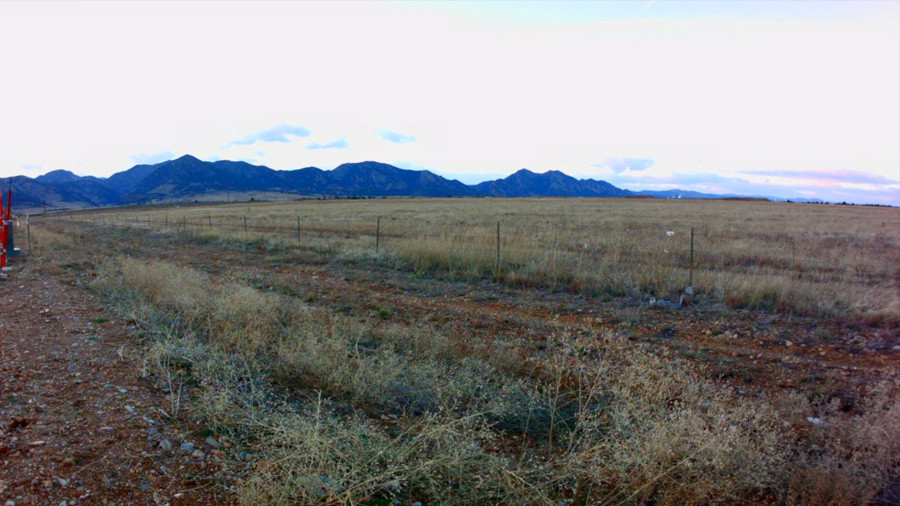
DENVER (KDVR) – Researchers Michael Ketterer and Scott Szechenyi from (NAU) concluded, “These particles are found to be pervasive in non-US Government land east of Rocky Flats, and it is reasonable to believe that ongoing wind transport is continuing to spread the contamination across open space used by the public, and toward residential areas.”
Surface soil was collected from the Jefferson County right-of-way property immediately west of Indiana Street in 2019.
NEW OAK RIDGE EARTHQUAKE RISK ANALYSIS SAYS PUBLIC SAFETY RISK IS TEN TIMES GREATER THAN PREVIOUS ESTIMATES
OREPA CALLS FOR PUBLIC HEARING: “WE HAVE A RIGHT TO BE INFORMED AND CONSULTED ABOUT THE RISKS.”
The third time is proving far from charming for the government’s plan to continue making nuclear bomb parts in Oak Ridge. The National Nuclear Security Administration this week released its third Supplement Analysis [SA] for the Y-12 Nuclear Weapons Complex. Buried on page 31 of the report is the finding that the consequences of a worst-case scenario are ten times greater under the current plan than previously disclosed in the 2011 Site-Wide Environmental Impact Statement.
Air Force Wants to Add More Long-Range Bombers to its Inventory
“The Air Force has been looking to improve its fleet by purchasing the upcoming B-21 Raider and modernizing the Boeing B-52 Stratofortress.” The Air Force has classified the costs of the B21 heavy bomber. Among other armaments, it will carry theW80-4 Long Range Stand Off nuclear warhead.
ARTICLE BY: CONNIE LEE | nationaldefensemagazine.org

The Air Force wants “just north” of 220 long-range bombers in its inventory by 2040, a service official said April 9.
Previously, the service said it wanted 175 aircraft in the current fleet, but “that was a programmatically derived approach,” Gen. Timothy Ray, head of Air Force Global Strike Command, told reporters during a call with reporters.
Udall Leads Senate Democrats In Urging Trump Administration to Indefinitely Extend Public Comment Periods and Pause Unrelated Federal Rulemakings During COVID-19 Pandemic Emergency
Trump administration is continuing controversial rulemakings that affect public health and safety – while the COVID-19 pandemic prevents Americans from weighing in on national policymaking process and necessary Tribal consultation
WASHINGTON—Today, U.S. Senator Tom Udall (D-N.M.) and 21 Senate Democrats sent a letter to Acting Director of the U.S. Office of Management and Budget (OMB) Russell Vought, calling on the executive branch to protect Americans’ right to participate in the democratic policy-making process, at a time when millions are worried about their and their loved ones’ health, safety and economic security and are unable to fully participate in the public comment process.
The senators requested that OMB indefinitely extend existing public comment periods and hearings until the public can safely gather after the dangers of the COVID-19 pandemic have passed.
LANL postpones radioactive vapor release because of COVID-19
“We’re pleased that LANL is postponing its massive radioactive tritium release, particularly as northern New Mexico braces for the coronavirus pandemic,” Jay Coghlan, executive director of Nuclear Watch New Mexico, said in a statement. “But postponement is not the answer. Since tritium decays so rapidly into harmless helium the lab should simply sit on it instead of putting the population at risk.”
ARTICLE BY: SCOTT WYLAND | santafenewmexican.com
Los Alamos National Laboratory will indefinitely postpone a project that would release radioactive vapors into the atmosphere because staff needed for the task are working from home during the COVID-19 pandemic.
The lab had planned to ventilate four containers of tritium-tainted waste April 17 to relieve built-up radioactive hydrogen in the barrels’ headspace to prevent them from rupturing while they are being handled or shipped. The U.S. Environmental Protection Agency approved the application for the radioactive release last year.
Coronavirus pandemic could delay Pentagon spending, policy bill, HASC chairman says
Rep. Adam Smith says widespread testing will play a major role in getting people back to work
ARTICLE BY: COREY DICKSTEIN | STARS AND STRIPES stripes.com
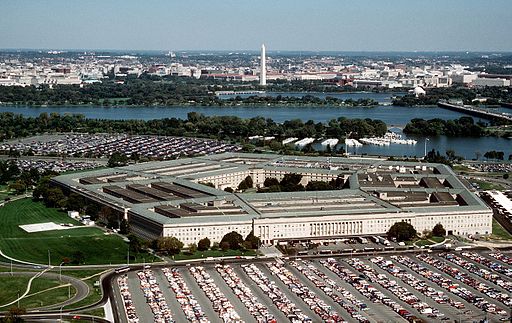 WASHINGTON — The coronavirus pandemic could delay federal funding bills, including the annual Pentagon spending and policy law, if the outbreak continues to paralyze American life into the summer months, a top House lawmaker on defense issues said Tuesday.
WASHINGTON — The coronavirus pandemic could delay federal funding bills, including the annual Pentagon spending and policy law, if the outbreak continues to paralyze American life into the summer months, a top House lawmaker on defense issues said Tuesday.
Rep. Adam Smith, D-Wash., told reporters that House Armed Services Committee members and staffers were moving forward in an effort to ready drafts of the 2021 National Defense Authorization Act by May 1. But with no end in sight to the pandemic and with most lawmakers at their homes across the nation, he worries about the Sept. 30 deadline for an on-time bill.
Continue reading
Coronavirus response to take priority in NDAA, House Armed Services chairman says
Rep. Adam Smith says widespread testing will play a major role in getting people back to work
ARTICLE BY: ANDREW CLEVENGER | rollcall.com
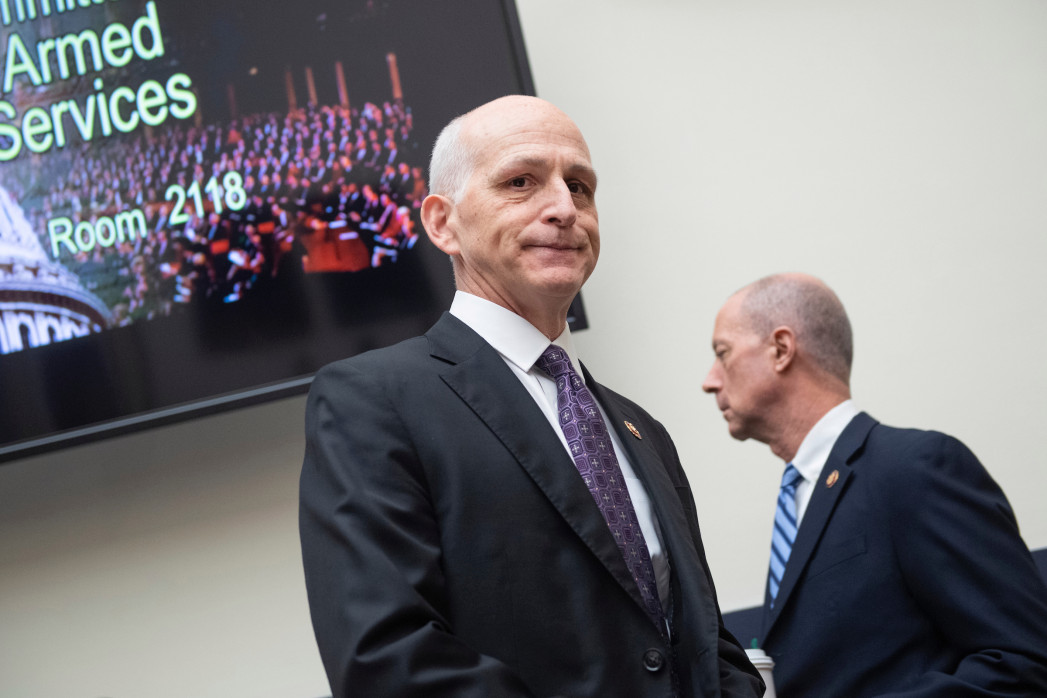
Ramping up production of testing materials for COVID-19 will be a top priority for this year’s annual defense policy bill, the chairman of the House Armed Services Committee said Tuesday.
Widespread testing will play a major role in getting people back to work, Washington Democrat Adam Smith told reporters during a press call. And some components of testing, like swabs, are already in short supply.
The Defense Department, Smith said, has a lot of experience and expertise in logistics and contracting and could lead government efforts to ensure the availability of extensive testing.
The Nuns, The Priests, and The Bombs
Nuclear disarmament activists challenge the security and legality of America’s nuclear weapons when they break into two top-secret facilities: The “Fort Knox of Uranium” and a U.S. Navy Trident nuclear submarine base.
Are they criminals or prophets sending a wake-up call to the world?
Russia’s nuclear workers isolated onsite as coronavirus spreads
Workers at Russia’s nuclear power plants will be isolated from the general public and required to live in onsite clinics at their respective stations as nuclear authorities tighten their response to the coronavirus after a number of industry infections.
BY CHARLES DIGGS | bellona.org
The order came Tuesday from Rosenergoatom, Russia’s nuclear utility, and specified that both primary and back up crews of nuclear technicians, who “facilitate process continuity” would now be required check in to dispensaries at their plants, where they would be provided with daily living essentials and isolated from outside contact.
Cleanup of U.S. Nuclear Waste Takes Back Seat as Virus Spreads
“The coronavirus pandemic demonstrates why we should get cleanup done once and for all,” said Jay Coghlan, executive director of Nuclear Watch New Mexico. “What we do as humans ebbs and flows with history, but the radioactive and toxic wastes that we leave behind last longer than our recorded history. We should be acting now.”
ARTICLE BY: SUSAN MONTOYA BRIAN | santafenewmexican.com
The U.S. government’s efforts to clean up Cold War-era waste from nuclear research and bomb making at federal sites around the country has lumbered along for decades, often at a pace that watchdogs and other critics say threatens public health and the environment.
Now, fallout from the global coronavirus pandemic is resulting in more challenges as the nation’s only underground repository for nuclear waste finished ramping down operations Wednesday to keep workers safe.
Trump Administration Determined to Exit Treaty Reducing Risk of War
Mike Pompeo and Mark Esper agreed to proceed with US withdrawal of Open Skies Treaty despite pandemic, sources say
ARTICLE BY: JULIAN BORGER | theguardian.com
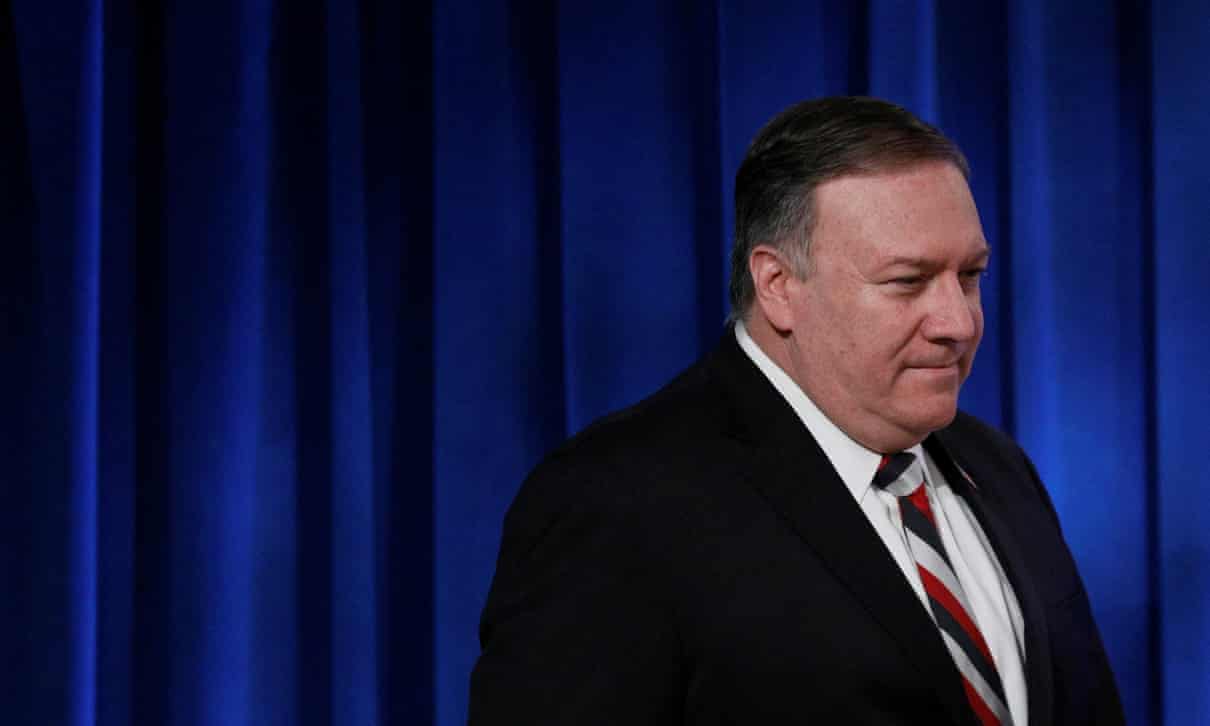
The Trump administration is determined to withdraw from a 28-year-old treaty intended to reduce the risk of an accidental war between the west and Russia by allowing reconnaissance flights over each other’s territory.
Despite the coronavirus pandemic, which has put off a full national security council (NSC) meeting on the Open Skies Treaty (OST), the secretary of defence, Mark Esper, and secretary of state, Mike Pompeo, have agreed to proceed with a US exit, according to two sources familiar with administration planning.
Gorbachev: Time to Revise the Entire Global Agenda
An Interview with Mikhail Gorbachev, World BEYOND War, April 5, 2020 | worldbeyondwar.org
Q: How did you take the news of the pandemic?
A: I think I took it the way most people did. Initially, there was hope that it could be controlled, localized. But things took a very different turn and the epidemic spread far and wide. Unprecedented measures and decisions became necessary. Leaders, citizens and international organizations found themselves in an extremely difficult situation. All of this will have to be thoroughly analyzed, but the priority now is to take things in hand and defeat this new, vicious enemy.
Advocates raise questions about proposal to allow some nuclear waste to be disposed in landfills
“I find it just astonishing that they would do that in the midst of the coronavirus pandemic. How the NRC can look themselves in the mirror to propose massive deregulation and do it in the midst of the pandemic, I find it just ethically shocking.” — Dan Hirsch, former director of the University of California, Santa Cruz’s Program on Environmental and Nuclear Policy
ARTICLE BY RACHEL FRAZIN | thehill.com
Scientists and advocates are raising concerns about a proposed relaxation on regulations for disposing of nuclear waste, saying that the government should halt the proposal as the scientific community focuses on the coronavirus.
A March 6 Nuclear Regulatory Commission (NRC) proposal would allow for the disposal of some nuclear waste in municipal landfills, rather than a licensed facility.
Advocates say the proposal could put public health at risk, pushing the NRC to give the public more time to weigh in.
NRC Proposes Allowing Nuclear Waste at Dumps, Recycling Sites
“Diane D’Arrigo, radioactive waste project director for the Nuclear Information and Resource Service, says the change would allow the industry to dispose of any waste other than irradiated fuel at landfills. That includes concrete, soil, clothing or any material where radiation still exists.”
ARTICLE FROM publicnewsservice.org
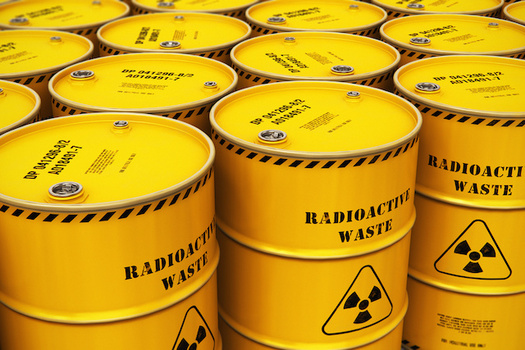
BOISE, Idaho — The Nuclear Regulatory Commission may change its rules to allow the nuclear industry to dump some of its waste in landfills.
Opponents say the change poses a public health risk and would allow waste to go unmonitored.
The proposal would enable the NRC to reinterpret the meaning of low-level radioactive waste so that it could be accepted at dumps and hazardous waste sites, rather than regulated storage facilities.
Why should NM store nation’s nuclear waste?
ARTICLE BY: LAURA WATCHEMPINO | MULTICULTURAL ALLIANCE FOR A SAFE ENVIRONMENT, PUEBLO OF ACOMA
If the Nuclear Regulatory Commission’s conclusion that it’s safe to move spent nuclear fuel from nuclear power plants across the country to a proposed storage facility in Lea County sounds vanilla-coated, it’s because the draft environmental impact statement for a Consolidated Interim Storage Facility submitted by Holtec International did not address how the casks containing the spent fuel would be transported to New Mexico.
LANL Tritium Ventilation Project On Hold Due To COVID-19, Scope Of Work Amended To Include Possible Secondary Venting
ARTICLE BY: MAIRE O’NEILL | losalamosreporter.com
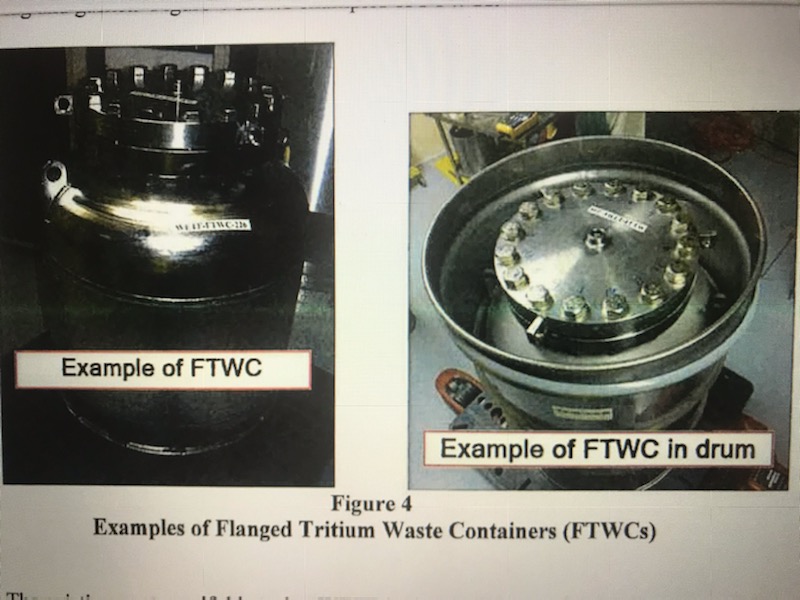
Los Alamos National Laboratory has notified the Environmental Protection Agency that plans for venting four flanged tritium waste containers (FTWCs) at Technical Area 54 have been finalized with an amended scope of work. However, according to NNSA Los Alamos Field Office spokesperson Toni Chiri, the operations, originally slated for this month, have been postponed due to COVID -19 and won’t be executed until the Laboratory is able to support the activity with a full complement of operational personnel.
Covid-19 is Killing Off Our Traditional Notions of National Defense
“It never made any sense, as Trump’s 2021 budget had initially proposed, to increase spending on nuclear weapons by $7 billion while cutting Centers for Disease Control and Prevention funding by $1.2 billion.”
I have always been a strong supporter of the U.S. armed forces, because I believe they are needed to safeguard our freedom and prosperity in a dangerous world. But even hawks like me cannot be blind to the prevalence of “black swan” events in the past 20 years.
NPT Review Conference To Be Postponed
“The specter of unconstrained nuclear competition looms over us for the first time since the 1970s. We are witnessing what has been termed a qualitative nuclear arms race, one not based on numbers but on faster, stealthier and more accurate weapons. Regional conflicts with a nuclear dimension are worsening, and proliferation challenges are not receding,” United Nations High Representative for Disarmament Affairs Izumi Nakamitsu
Daryl G. Kimball, executive director | armscontrol.org
The global coronavirus disease (COVID-19) pandemic has forced a postponement of the 10th review conference of the nuclear Nonproliferation Treaty (NPT), possibly until early 2021. Originally scheduled to be held at UN headquarters in New York from April 27 until May 22, the conference typically involves hundreds of representatives from most of the 191 states-parties to the treaty, as well as nongovernmental organizations and meeting support personnel. The conference caps off a five-year cycle of meetings through which states-parties review implementation and compliance with the treaty and seek agreement on action steps to overcome new challenges and to fulfill core goals and objectives.
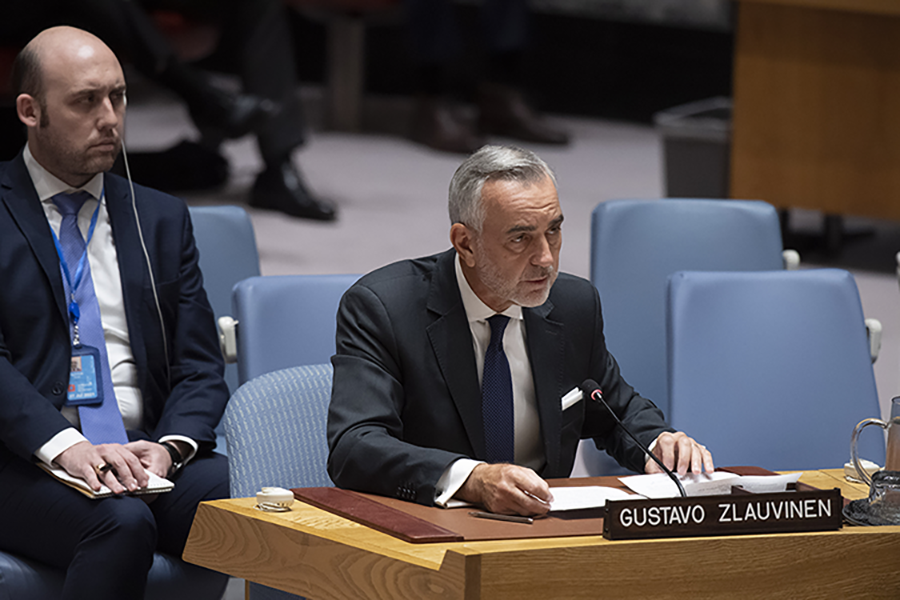
PENTAGON ASKS TO KEEP FUTURE SPENDING SECRET

“At a time when it is clear to everyone that US national security spending is poorly aligned with actual threats to the nation, the DoD proposal would make it even harder for Congress and the public to refocus and reconstruct the defense budget.”
The Department of Defense is quietly asking Congress to rescind the requirement to produce an unclassified version of the Future Years Defense Program (FYDP) database.
Preparation of the unclassified FYDP, which provides estimates of defense spending for the next five years, has been required by law since 1989 (10 USC 221) and has become an integral part of the defense budget process.
But the Pentagon said that it should no longer have to offer such information in an unclassified format, according to a DoD legislative proposal for the pending FY 2021 national defense authorization act.
New study says LANL nuclear pit production could go higher
Jay Coghlan, executive director of Nuclear Watch New Mexico, said he doubted the lab has the “expertise and competence” to produce 80 plutonium pits, “but they’re going to eat up taxpayers’ money.” Coghlan said he’s also concerned about defense leaders refusing to use the thousands of pits stockpiled during the Cold War and instead favoring new, heavily modified pits. That raises the question of whether the Pentagon might resume nuclear testing on these untried cores instead of computer simulations.
BY: SCOTT WYLAND | santafenewmexican.com
Los Alamos National Laboratory should be able to produce 80 plutonium pits to meet surges in demand, not just the official goal of 30 pits a year, according to a proposed update to the lab’s last sitewide analysis.
Defense plans call for the lab to produce 30 pits — the grapefruit-sized explosive centers in nuclear warheads — in 2026 and the Savannah River Site to manufacture 50 in 2030.
Legacy Nuclear Weapons Maintenance Wastes
Every base where legacy nuclear weapons (early-generation) were deployed (Bomber, Fighter Interceptor Squadrons (FIS), Nike Ajax, BOMARC Missile, ICBM), were maintained, or decommissioned, is potentially contaminated with highly classified 91(b) radioactive material (RAM) from the maintenance of the nuclear weapons during the replacing of the polonium-beryllium (Po-Be) TOM initiators.
BY ANNETTE CARY | georgeafb.info
There is an under-reported news story about radioactive contamination at Air Force bases that were closed and transferred to the public by the Base Realignment and Closure Commission (BRAC).
ONE YEAR OF U.S. NUCLEAR WEAPONS SPENDING WOULD PROVIDE 300,000 ICU BEDS, 35,000 VENTILATORS AND SALARIES OF 75,000 DOCTORS
MATTHEW IMPELLI | newsweek.com
The amount of money spent in one year by the U.S. on nuclear weapons could instead provide 300,000 ICU (intensive care unit) beds, 35,000 ventilators and 75,000 doctors’ salaries, according to the International Campaign to Abolish Nuclear Weapons (ICAN)–a “coalition of non-government organizations promoting adherence to and implementation of the UN [United Nations} nuclear weapon ban treaty.”
In its recent report, the group stated that, according to armscontrol.org, the U.S. spent $35.1 billion on nuclear weapons in 2019. The costs are based on reported averages, but the study noted that the $35.1 billion in nuclear weapons spending would instead pay for “300,000 beds in intensive care units, 35,000 ventilators, and the salaries of 150,000 U.S. nurses and 75,000 U.S. doctors.”
Nuclear News Archives – 2019
U.S. Companies Granted Authorizations for Nuclear Work in Saudi
Want to help the erratic, murderous Saudi regime develop nuclear technology? That’s OK with the Department of Energy.
BY ERIN BANCO | thedailybeast.com
The U.S. Department of Energy has approved six authorizations for U.S. companies seeking to conduct nuclear related work in Saudi Arabia, according to two sources with knowledge of those approvals. Federal law stipulates that companies obtain clearance from the U.S. government for exporting nuclear technology to or engaging in the production or development of special nuclear material in Saudi Arabia.
The authorizations—known as Part 810s, referring to a clause in federal regulations —allow U.S. companies to divulge specific details about plans for working in Saudi Arabia and certain information about the nuclear technology. For example, a company would need a Part 810 to transfer physical documents, electronic media or the “transfer of knowledge and expertise” to Saudi Arabia, according to the Department of Energy.
US underground nuclear waste dump explained

BY SUSAN MONTOYA BRYAN | stripes.com March 23, 2019
WHAT IS THE WASTE ISOLATION PILOT PLANT? WIPP is the United States’ only permanent underground repository licensed to take what is known as transuranic waste, or waste generated by the nation’s nuclear weapons program that’s contaminated with radioactive elements heavier than uranium.
Residents around TMI exposed to far more radiation than officials claimed
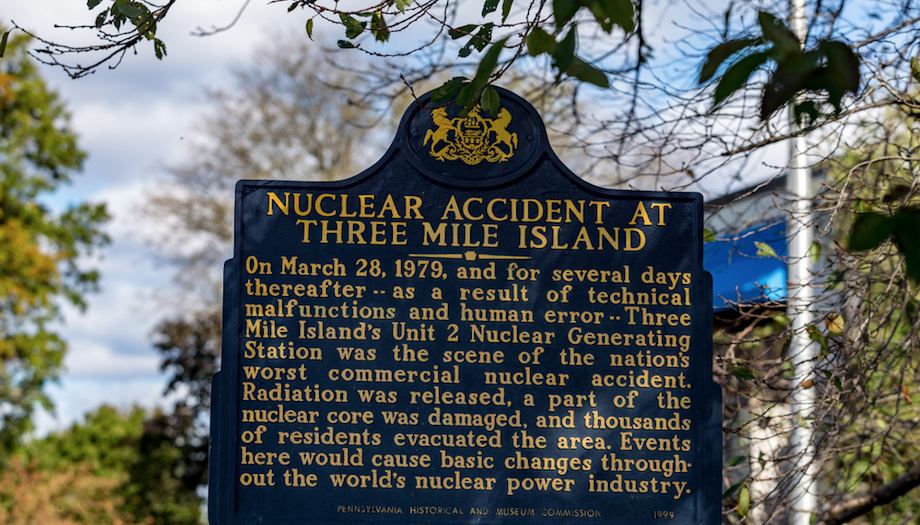
Researchers under gag order couldn’t investigate true health impacts after Three Mile Island nuclear disaster
By CINDY FOLKERS | beyondenuclearinternational.org
Residents around Three Mile Island were exposed to much more radiation from the nuclear disaster than was claimed by officials, a fact that was kept from researchers and the public for years.

After the Three Mile Island reactor core melted and radioactivity was released to the surrounding population, researchers were not allowed to investigate health impacts of higher doses because the TMI Public Health Fund, established to pay for public health research related to the disaster, was under a research gag order issued by a court. If a researcher wanted to conduct a study using money from this Fund, they had to obey two main parameters set forth by Federal Judge Sylvia Rambo, who was in charge of the Fund.*
North Korea, One More Time
BY ROBERT ALVAREZ | washingtonspectator.org
March 18, 2019
Less than a week after the collapsed talks, reports of the restarting of a missile testing site the North Koreans had previously promised to dismantle do not bode well.
Given Bolton and Pompeo’s bellicose proclivities—and despite Trump’s assertions to the contrary—resumption of joint U.S./South Korean military exercises may still be in the cards, delivering a blow to newly kindled hopes for an end to the nearly 70-year Korean War. Alvarez reported that North Korea wanted to be recognized and treated as a nuclear weapons state with potential long-range missiles.
India, Pakistan threatened to unleash missiles at each other: sources
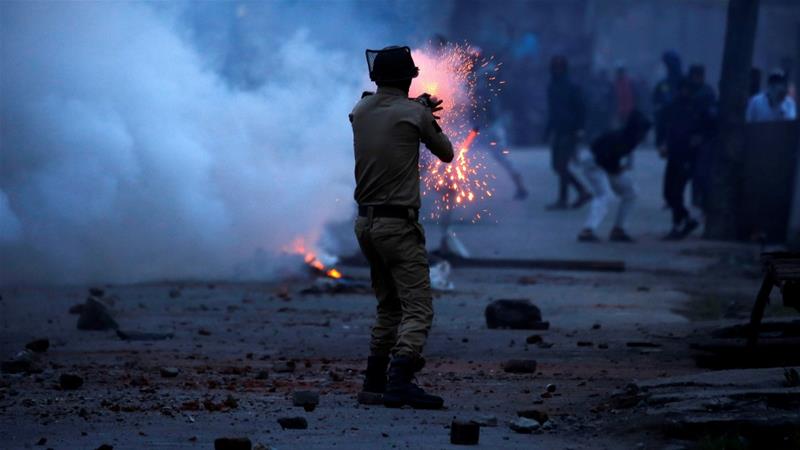
Nuclear-armed India and Pakistan almost went to war. “Diplomatic experts said that the latest crisis underlined the chances of misread signals and unpredictability in the ties between the nuclear-armed rivals, and the huge dangers.”
BY SANJEEV MIGLANI & DRAZEN JORGIC | reuters.com March 16, 2019
NEW DELHI/ISLAMABAD (Reuters) – The sparring between India and Pakistan last month threatened to spiral out of control and only interventions by U.S. officials, including National Security Advisor John Bolton, headed off a bigger conflict, five sources familiar with the events said.
At one stage, India threatened to fire at least six missiles at Pakistan, and Islamabad said it would respond with its own missile strikes “three times over”, according to Western diplomats and government sources in New Delhi, Islamabad and Washington.
Watch incredible restored footage of the first nuclear bomb detonation
Original Trinity Footage restoration includes removing dirt and scratches and minimizing some defects in the processing of the original negative.
On July 16, 1945, US Army detonated the first nuclear weapon in New Mexico’s Jornada del Muerto desert. Codenamed Trinity, the test was part of the Manhattan Project. Three weeks later, the United States dropped atomic bombs on Hiroshima and Nagasaki. From the Atom Central page about Trinity:
The bomb was detonated, producing an intense flash and a fireball that expanded to 600 meters in two seconds. The explosive power was equivalent to 18.6 kilotons of TNT. It grew to a height of more than 12 kilometers, boiling up in the shape of a mushroom. Forty seconds later, the blast of air from the bomb reached the observation bunkers, along with a long and deafening roar of sound.
Smith: “Trim Budget Fat in America’s Nuclear Triad”
“I would like to kill the low-yield nuclear weapon program. I don’t think it’s a good idea,”
BY JOE GOULD | defensenews.com
WASHINGTON — A powerful skeptic of U.S. nuclear weapons spending, House Armed Services Committee chairman Adam Smith said Tuesday he was open to cutting back quantities of nuclear arms instead of one leg of the nation’s nuclear triad.
“I think a deterrent policy, having enough nuclear weapons to ensure that nobody launches a nuclear weapon at you because you have sufficient deterrent, I think we can do that with fewer warheads,” Smith said. “I’m not sure whether that means getting rid of one leg of the triad or simply reducing the amount in each leg.”
The comments, at the Carnegie Endowment for International Peace’s annual nuclear arms forum, came days after Smith, D-Wash., triggered Republican pushback when he said publicly that the intercontinental ballistic missile leg of the triad is not necessary to deter Russia and China. On Tuesday, Smith seemed to soften on that argument, conceding he believes nuclear weapon systems ought to be modernized but maintaining his stance the U.S. needs fewer nuclear weapons.
Trump budget increases funding for nuclear weapons agency amid new production
BY ARON MEHTA | defensenews.com
WASHINGTON — The National Nuclear Security Administration will receive an 8.3 percent increase over its current budget, with an eye on completing production of a new low-yield nuclear missile this upcoming fiscal year.
/arc-anglerfish-arc2-prod-mco.s3.amazonaws.com/public/26PF65JTNFHVNDRBP5J7OVKX4Q.jpg)
The NNSA, a semiautonomous agency within the Department of Energy that has oversight on America’s nuclear weapons stockpile, is requiring $16.5 billion in the fiscal 2020 budget, up $1.3 billion from its FY19 total. Weapons-related activities would see an allocation of $12.4 billion, an 11.8 percent increase over how much funding went to that mission in FY19. NNSA’s proposed budget comprises 52 percent of the DOE’s total budget request.
“The President’s budget request reflects the Trump Administration’s strong commitment to ensuring that U.S. nuclear capabilities are second to none,” NNSA Administrator Lisa Gordon-Hagerty in a statement. “This vital funding will enable us to continue modernization of the Nuclear Security Enterprise to face 21st century threats.”
DOE reports show WIPP chemical exposure months before workers got sick
Employees fell ill while working both underground and at the service
BY ADRIAN C HEDDEN | Carlsbad Current-Argus
Video by Wochit
Story Highlights
– DOE expressed concerns for WIPP’s airflow months before incidents
– Emplacement and shipments were halted for two weeks in October to address the problem
A federal investigation into operations at the Waste Isolation Pilot Plant near Carlsbad was announced last month, after workers in the underground and on the surface were allegedly exposed to dangerous chemical and excessive heat.
The U.S. Department of Energy’s Office of Enterprise Assessments’ Office of Enforcement announced the investigation on Jan. 29 in a letter to Bruce Covert, president and project manager of Nuclear Waste Partnership – the DOE-hired contractor that oversees daily operations at WIPP.
Eight years have passed since a tsunami smashed into the Fukushima Daiichi nuclear plant in Japan, sparking a meltdown and the worst atomic crisis since Chernobyl. The disaster zone remains a huge building site with the immediate danger cleared but an immensely difficult clean-up job still looming.
BY KAREN NISHIMURA | phys.org
What is the state of the clean-up?
The clean-up operation is progressing at a painstakingly slow pace. Robotic arms have recently been employed to successfully pick up pebble-sized pieces of radioactive fuel at the bottom of reactor two, one of three that melted down after the 2011 quake and tsunami.
This is the first step to prepare the extremely delicate task of extracting the fuel that will not begin in earnest until 2021 at the earliest, the government and the TEPCO operator have said. Another problem is the fuel pools in reactors one, two and three.
The pool in reactor one is covered in rubble which needs to be removed “with extreme care,” explained Akira Ono, head of the TEPCO subsidiary in charge of decommissioning.
Removing fuel from the pools in reactors one and two will not start until 2023.
For International Women’s Day, here are 7 of history’s greatest women-led protests
Three centuries of female fury over taxes, bread shortages, voting rights and more.

International Women’s Day has been around for more than a century, but it has picked up steam in recent years, thanks to its preeminent hashtagability. What started as socialist demonstrations has now evolved into an official holiday in more than two dozen countries, a United Nations day for women’s rights and world peace, and, well, a marketing opportunity for Barbie dolls, cosmetics and beer (because capitalism).
In honor of the holiday’s more egalitarian roots, here are some regular women in history who gathered together to protest, rebel and, in some cases, riot.
Continue reading
Call to Action: Reauthorize VAWA
Every March, we celebrate Women’s History Month. And today is International Women’s Day, when we recognize the invaluable contributions made by women to every sector of society.
Here in New Mexico, we have a lot to celebrate this International Women’s Day. We have two new congresswomen in Deb Haaland, one of the first Native American women elected to Congress, and Xochitl Torres Small, the first Latina to represent New Mexico’s 2nd Congressional District.
There are now 25 women in the U.S. Senate and 102 in the U.S. House of Representatives — both all-time highs. We celebrate this achievement, but we can’t stop until these numbers increase.
Our work is never finished. And that includes reauthorizing the Violence Against Women Act (VAWA), which is due to expire in the coming months.
VAWA funds new and extended services for victims of domestic violence. It gives law enforcement the tools to identify and prosecute offenders. Its protections for indigenous women are essential in New Mexico.
Without it, many women will have nowhere to turn for help.
This International Women’s Day, we must commit ourselves to reauthorizing VAWA and prioritizing women’s safety. Join me in calling on Congress to do the right thing.
|
Women are at the forefront of the radical campaign for Scottish independence which seeks to break the exploitative British union and free Scotland to pursue a fairer, more just and nuclear weapon free independent nation. Women are the heart of the peace movement from the Greenham Common Peace Camp (1981 — 2000) to the Campaign for Nuclear Disarmament (CND).
Read Tommy Sheridan’s article outlining the “giant tapestry which represents the progressive role and contribution of women everywhere to our world.”
How Pakistani Women are Using IWD to Push for Peace with India
BY SABRINA TOPPA | vice.com
Photo by Saad Sarfraz Sheikh
“Women would be the worst-off if a war starts between two nuclear-armed nations,”
– Farooq Tariq, a Lahore-based political activist who helped organise the Global Standout for Peace in South Asia last week.
This year, women are taking a central stand against the region’s long history of conflict, militarism, and war, with both the Aurat March and Aurat Azadi March explicitly denouncing the creep towards war, and exhorting the nuclear-armed neighbours to issue a ceasefire in Kashmir. “We push for peace and against the war, the militarisation of our everyday lives, and a rhetoric of jingoism,” read a statement from Aurat March on Wednesday.
Fukushima at 8: Accusations of scientific misconduct concern city in Japan

Eight years after the Fukushima nuclear reactors exploded on Japan’s Northern coast, spewing radioactive particles into the air, across the land, and into the Pacific Ocean, the country continues to struggle with decontamination and relocation efforts. Determining the health impacts resulting from the nuclear disaster has been particularly fraught. For Date City, about 60 km from the ruined Fukushima reactors, and still blanketed by radioactive contamination from the ongoing catastrophe, the struggle for protection of health continues amid accusations of scientific misconduct and betrayal.
Trump is barreling toward war with Iran. Congress must act to stop him.
BY TOM UDALL & RICHARD J DURBIN | washingtonpost.com
Tom Udall, a Democrat, represents New Mexico in the U.S. Senate. Richard J. Durbin, a Democrat, represents Illinois in the U.S. Senate.
Sixteen years after the U.S. invasion of Iraq, we are again barreling toward another unnecessary conflict in the Middle East based on faulty and misleading logic.
The Trump administration’s Iran policy, built on the ashes of the failed Iraq strategy, is pushing us to take military action aimed at regime change in Tehran. We must not repeat the mistakes of the past, and Congress must act urgently to ensure that.
House Armed Services Committee Ranking Member Adam Smith Opening Statement
Full Committee Hearing on Outside Perspectives on Nuclear Deterrence (As Prepared)
Video link to Chairman Smith’s opening remarks here: https://armedservices.house.gov/ | March 6, 2019
More than a decade ago in a 2007 op-ed George Schultz, Henry Kissinger, William Perry, and Sam Nunn warned that “Unless urgent new actions are taken, the U.S. soon will be compelled to enter a new nuclear era that will be more precarious, psychologically disorienting, and economically even more costly than was Cold War deterrence.” And just last month, Senator Nunn and Secretary Moniz said in a joint op-ed “The US and Russia are sleep-walking toward nuclear disaster.”
“Given the President’s erratic tweets about having “a much bigger and more powerful” nuclear button, we need to ensure that we move away from a button-measuring policy that could devolve into a button-pressing policy.”
Giving the Bomb to Saudi Arabia’s Dr. Strangelove
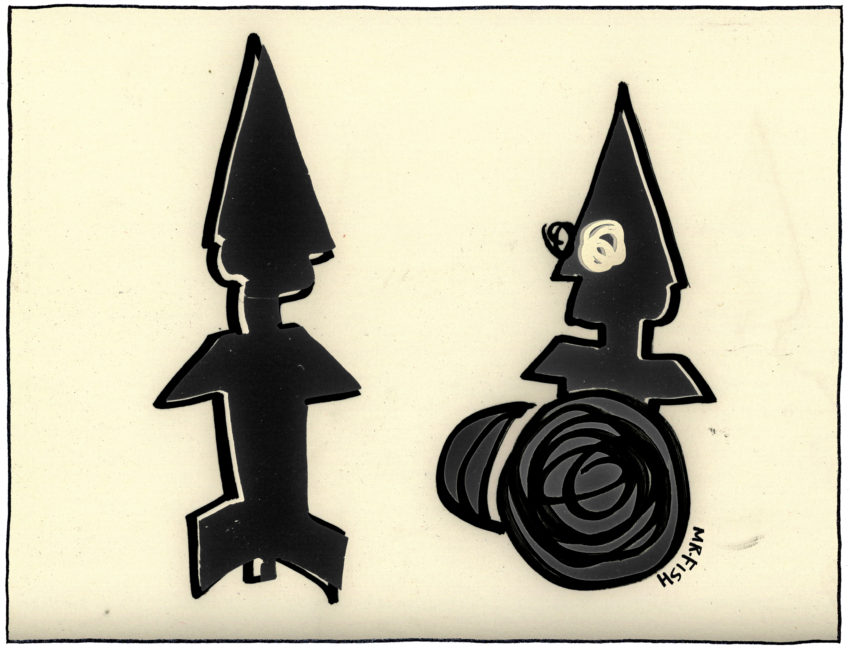 CARTOON BY MR FISH | truthdig.com
CARTOON BY MR FISH | truthdig.com
Mr. Fish, also known as Dwayne Booth, is a cartoonist who primarily creates for Truthdig and Harpers.com.
ARTICLE BY CHRIS HEDGES | truthdig.com
Truthdig columnist Chris Hedges is a Pulitzer Prize-winning journalist and New York Times best-selling author.
The most dangerous foreign policy decision of the Trump administration—and I know this is saying a lot—is its decision to share sensitive nuclear technology with Saudi Arabia and authorize U.S. companies to build nuclear reactors in that country.
A nuclearized Saudi Arabia is a grave existential threat to the Middle East and ultimately the United States.
Cold Start: India’s Answer to Pakistan’s Nuclear Bullying
ET ONLINE | economictimes.indiatimes.com
Cold Start is Indian military doctrine aimed at punishing Pakistan without a full-blown nuclear clash.
NEW DELHI: A nuclear strike is always the threat Pakistan holds out against any possible Indian attack. Recently, after India declared it would avenge the Pulwama attack, Pakistan Rail Minister Sheikh Rashid Ahmad again threatened of a nuclear strike after which “neither the birds would chirp nor the bells would ring in temples”.
But India has an answer to this threat — a Cold Start. It is a war doctrine aimed at punishing Pakistan without a full-blown nuclear clash.
The idea for the Cold Start was fuelled by Operation Parakram, launched after the terror attack on Parliament in December 2001. The operation exposed major operational gaps in India’s offensive power, mainly slow troop mobilisation along the border.Continue reading
John LaForge: Nuclear power can’t survive, much less slow climate disruption
“We still don’t know how to recycle the nuclear waste and we’re 70 years in. We have good engineers in the United States. We spent 18 years and $8 billion building an underground vault in Yucca Mountain to store the waste for 10,000 years, but we can’t use it. It’s already no good because there are cracks in the mountain. But any geologist could have told them we live on tectonic plates and you can’t keep underground vaults secure.”
BY: JOHN LAFORGE | madison.com
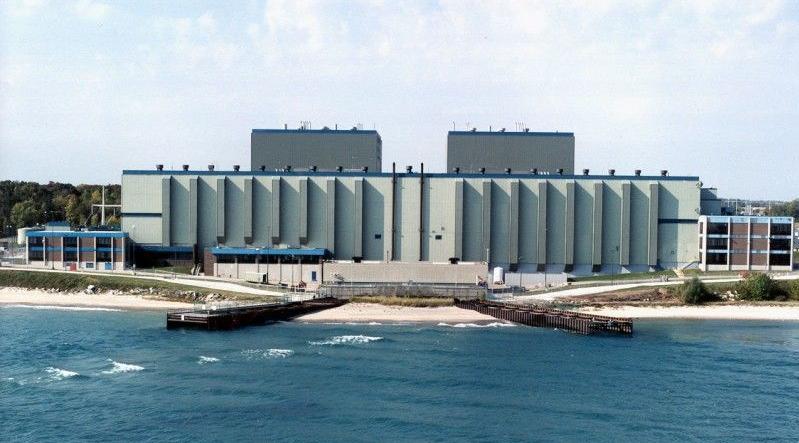
Donald Trump: “America will never be a socialist country.”
Too late. We already have socialism for the rich, with the nuclear power industry as a prime example.
On a level playing field, nuclear power would go bust. Those owners get financial supports or subsidies that safe renewables like solar power, geothermal, and wind power don’t get. Two particularly large government handouts keep the reactor business afloat, and without them it would crash overnight.
1) In a free market, the U.S. Price Anderson Act would be repealed. The act provides limited liability insurance to reactor operators in the event of a loss-of-coolant or other radiation catastrophe. The nuclear industry would have to get insurance on the open market like all other industrial operations. This would break their bank, since major insurers would only sell such a policy at astronomical rates, if at all.
2) The U.S. Nuclear Waste Policy Act would also be repealed. NWPA is the government’s pledge to take custody of and assume liability for the industry’s radioactive waste. Without NWPA the industry would have to pay to contain, isolate and manage its waste for the 1-million-year danger period. The long-term cost would zero the industry’s portfolio in a quick “correction.”
Even if the industry retained the above two subsidies, economists say the reactor business is finished. Jeremy Rifkin — the renowned economic and social theorist, author, political adviser to the European Union and heads of state, and author of 20 books — was asked his view of nuclear power at a Wermuth Asset Management global investors’ conference.
Rifkin answered: “Frankly, I think … it’s over. Let me explain why from a business perspective. Nuclear power was pretty well dead-in-the-water in the 1980s, after Three Mile Island and Chernobyl. It had a comeback. The comeback was the industry saying: ‘We are part of the solution for climate change because we don’t emit CO2. It’s polluting, but there’s no CO2.’
“Here’s the issue: Nuclear power right now is 6 percent of energy of the world. There are only 400 nuclear power plants. These are old nuclear power plants. But our scientists tell us [that] to have a minimum impact on climate change — which is the whole rationale for bringing this technology back — nuclear would have to be 20 percent of the energy mix to have the minimum, minimum impact on climate change — not 6 percent of the mix.
“That means we’d have to replace the existing 400 nuclear plants and build 1,600 additional plants. Three nuclear plants have to be built every 30 days for 40 years to get to 20 percent, and by that time climate change will have run its course for us. So I think, from a business point of view, I just don’t see that investment. I’d be surprised if we replace 100 of the 400 existing nuclear plants, which would take us down to 1 or 2 percent of the energy [mix].
“Number 2: We still don’t know how to recycle the nuclear waste and we’re 70 years in. We have good engineers in the United States. We spent 18 years and $8 billion building an underground vault in Yucca Mountain to store the waste for 10,000 years, but we can’t use it. It’s already no good because there are cracks in the mountain. But any geologist could have told them we live on tectonic plates and you can’t keep underground vaults secure.
“Number 3: We run into uranium deficits according to the IAEA [International Atomic Energy Agency] between 2025 and 2035 with just the existing 400 plants. So that means the price goes up.
“Number 4: We could do what the French generation of new plants is doing and recycle the uranium to plutonium. But then we have plutonium all over the world in an age of uncertainty and terrorism.
“Finally, and this is the big one that people don’t realize: We don’t have the water. Over 40 percent of all the fresh water consumed in France each year goes to cooling the nuclear reactors. It’s almost 50 percent now. When it comes back [when reactor cooling water is returned to the lakes and rivers] it’s heated and it’s dehydrating our ecosystems, and threatening our agriculture. We don’t have the water, and this is true all over the world. We have saltwater nuclear plants but then you have to put them on coastal regions and you risk a Fukushima because of tsunamis….
“So it’s no accident Siemens [Corporation] is out [of reactor business], Germany is out, Italy is out, Japan is now out… I’d be surprised if nuclear has much of a life left. I don’t think it’s a good business deal.”
Rifkin is not alone in his assessment. William Von Hoene, Senior Vice President of Exelon Corp., said last April 16 at the annual US Energy Association’s meeting, “I don’t think we’re building any more nuclear plants in the United States,” Platts reported. “I don’t think it’s ever going to happen,” Von Hoene said. “I’m not arguing for the construction of new nuclear plants. They are too expensive to construct.”
John LaForge, syndicated by PeaceVoice, is co-director of Nukewatch, a peace and environmental justice group in Wisconsin, and is co-editor with Arianne Peterson of “Nuclear Heartland, Revised: A Guide to the 450 Land-Based Missiles of the United States.”
Share your opinion on this topic by sending a letter to the editor to tctvoice@madison.com. Include your full name, hometown and phone number. Your name and town will be published. The phone number is for verification purposes only. Please keep your letter to 250 words or less.
Why the collapse of a historic nuclear treaty could lead to a Cold War-like arms race
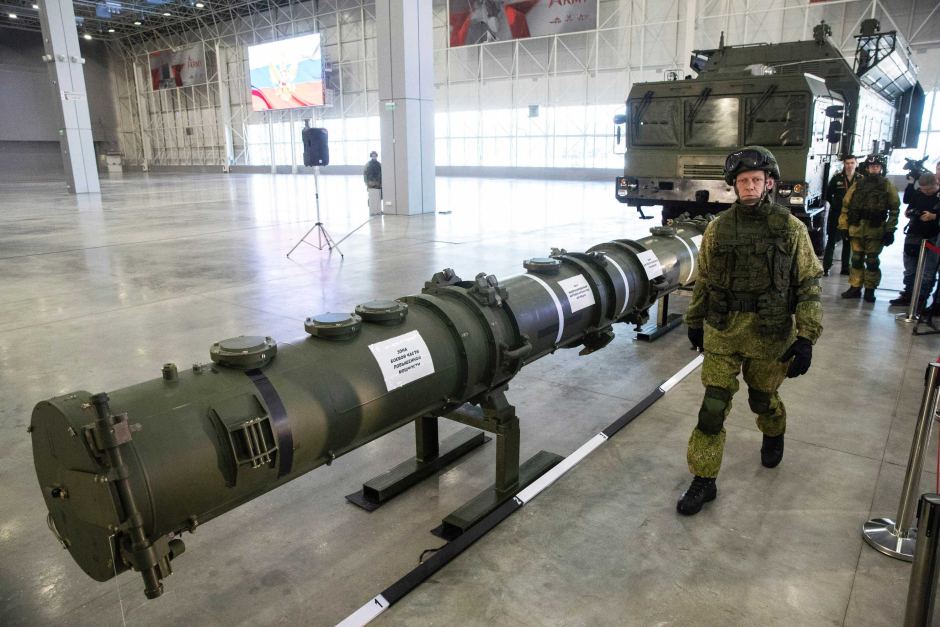
Russia denies its 9M729 land-based cruise missile violates the key nuclear arms pact. (AP: Pavel Golovkin)
The United States and Russia have ripped up a Cold War-era nuclear missile treaty, leaving analysts fearing a potential arms race with global ramifications.
BY TASHA WIBAWA | abc.net.au March 2, 2019
Last week, Russian President Vladimir Putin said Russia was ready for a Cuban Missile-style crisis if the US wanted one, referring to the 1962 standoff that brought the world to the edge of nuclear war.
Decades later, tensions between the two nations are heating up again.
Women marched for Korean reconciliation. Washington is in our way.
BY GLORIA STEINEM & CHRISTINE AHN | washingtonpost.com February 25, 2019
Gloria Steinem and Christine Ahn are founders of Women Cross DMZ , a global movement mobilizing for peace on the Korean Peninsula.
In 2015, we were among 30 women from around the world who came together to cross the Korean demilitarized zone (DMZ), the infamous strip of land that has separated North and South Korea since a “temporary” cease-fire halted the Korean War 65 years ago.
We marched to show this anachronistic conflict need no longer separate families, prohibit communication, and provide excuses for land mines, nuclear weapons and an expensive, ongoing U.S. military commitment. Among us were women who had won Nobel Peace Prizes for helping to bring peace to Liberia and Northern Ireland.
Despite criticism that we were naively playing into the sinister plans of one side or the other, we held a peace symposium in Pyongyang with hundreds of North Korean women, and marched with thousands in the capital and in Kaesong. After crossing the DMZ, we walked with thousands of South Korean women along the barbed-wire fence in Paju.
Nuclear safety board still wary of DOE changes
BY MARK OSWALD / JOURNAL STAFF WRITER| abqjournal.com Copyright © 2019 Albuquerque Journal
SANTA FE – At the end of a hourslong meeting in Albuquerque on Thursday night, officials from U.S. Department of Energy agencies had failed to persuade an independent nuclear safety board and a contingent of interested New Mexicans that a DOE rules change won’t restrict efforts to keep the state’s national laboratory sites safe.
Bruce Hamilton, a Republican who chairs the presidentially appointed Defense Nuclear Facilities Safety Board, said DOE officials had continued to downplay the impact of DOE Order 140.1, which last May placed new limits on the board’s 30-year-old oversight role.
“We have repeatedly heard from DOE representatives that they really don’t mean what they wrote (in the rule) or at least that they really don’t intend to follow what they wrote,” said Hamilton. He said this is a “particularly bizarre argument coming out of the nuclear culture that has set the standard for following the written rules to the letter.”
The new rule says the private contractors that manage facilities like the Los Alamos and Sandia national labs can’t respond to DNFSB information requests without notifying or the approval of a DOE liaison and that the weapons facilities can refuse to provide information that is “pre-decisional” or that the DOE determines on its own is not needed by DNFSB inspectors to do their jobs.
Nuclear safety board cites safety concerns in reduced role
BY REBECCA MOSS | santafenewmexican.com
Members of the public and a federal nuclear safety board voiced concerns this week that a U.S. Department of Energy order implemented in May excludes some facilities from the board’s oversight, creates obstacles to monitoring worker safety and allows private contractors to shield information from the public.
At a federal hearing on the order Thursday in Albuquerque, federal officials for the national laboratory defended the order, arguing the document has not significantly changed the relationship between the labs and the Defense Nuclear Facilities Safety Board.
But the document outlines unprecedented restrictions on the board’s access to information and oversight of nuclear sites and workers.
Thursday’s hearing was the last of three held to gather public comment on the order, though board member Daniel Santos said he would propose additional field hearings.
About 20 people spoke Thursday, many saying they were concerned in particular that staff of the safety board would no longer have authority to oversee the Waste Isolation Pilot Plant in Carlsbad, an underground nuclear waste storage site where a multibillion-dollar radiation leak occurred in 2014.
Many said the document should be suspended.
John Heaton, a former state lawmaker and chairman of the Carlsbad mayor’s nuclear task force, told the board, “It would be horrible to lose you.”
The board’s role in overseeing the safety of workers at WIPP was crucial, he said.
“The workers on site are very, very important,” Heaton said. “They are our friends, our neighbors; they are the people we go to church with, that we live with.”
The Defense Nuclear Facilities Safety Board was established by Congress in 1988 to provide independent advice to the energy secretary and the president on public health and safety at nuclear facilities. Its inception was largely born out of concern that the Department of Energy was operating with too much autonomy and too little transparency.
The Department of Energy’s Order 140.1 Interface with the Defense Nuclear Facilities Safety Board is misguided and likely illegal because it acts contrary to the Board’s 1988 enabling legislation. View the Report on Defense Nuclear Facilities Saftey Board Hearing
Putin warns new weapons will point toward U.S. if missiles are deployed in Europe
MOSCOW (Reuters) In his annual address Feb. 19, Russian President Vladimir Putin warned about consequences if the United States deployed missiles in Europe.
BY AMIE FERRIS-ROTMAN | washingtonpost.com February 20, 2019
MOSCOW — Russian President Vladimir Putin said Wednesday that his country’s new missiles would point toward the United States if Washington deploys missiles in Europe. Putin emphasized that Russia will only respond if the United States makes the first move, but his remarks were among the strongest yet on a potential new arms race after the countries’ mutual pullout from a Cold War-era nuclear weapons treaty.
“Let me be loud and clear,” Putin told lawmakers gathered at a historic hall near the Kremlin for an annual address that is akin to the U.S. State of the Union speech.
He continued with a message to Europe, saying Russia would be “forced to create and deploy types of weapons” that can be used against nations that pose “direct threats.” And in a clear reference to the United States, Putin said the Russian missiles also could be trained on where “the centers of decision-making are located.”
Nuclear saber-rattling has become key to the Kremlin’s projection of power both at home and abroad, and could be an attempt to bring Washington to the negotiating table.
I Was a Nuclear Site Guard. My Colleagues Sexually Assaulted Me.
BY JENNIFER GLOVER | nytimes.com
Ms. Glover was a security guard at the Department of Energy’s Nevada National Security Site.
The violence and lack of accountability I experienced at such a sensitive location put us all at risk.
The sexual harassment and violence I endured while working as a security guard at the Department of Energy’s Nevada National Security Site loops over and over through my mind. I have nightmares about it to this day.
United States Files False Claims Act Lawsuit in Connection With MOX Fuel Fabrication Facility Contract
![]() Department of Justice Office of Public Affairs
Department of Justice Office of Public Affairs
FOR IMMEDIATE RELEASE ― Thursday, February 14, 2019
The Department of Justice announced today that the United States has filed suit against CB&I AREVA MOX Services LLC (MOX Services) and Wise Services Inc. under the False Claims Act and the Anti-Kickback Act in connection with a contract between MOX Services and the National Nuclear Security Administration relating to the design and operation of the MOX Fuel Fabrication Facility (MFFF) at the NNSA Savannah River Site in Aiken, South Carolina. MOX Services is a South Carolina Limited Liability Corporation with headquarters in Aiken, South Carolina. Wise Services, which subcontracted with MOX Services, is an Ohio corporation with headquarters in Dayton, Ohio.
Under the MOX Contract, MOX Services agreed to design, build, operate (and ultimately decommission) the MFFF. The MFFF is designed to transform weapons-grade plutonium into mixed oxide fuel rods that may be irradiated in commercial nuclear power plants. In performing the MOX Contract, MOX Services entered into a series of subcontracts with Wise Services between 2008 and 2016. Each of these subcontracts provided for Wise Services to supply labor, materials, equipment, and supervision for unplanned construction activities (e.g. general labor, plumbing, electrical, carpentry) deemed necessary to support MOX Services’ efforts at the MFFF.
Watch – A Woman’s Chernobyl Story
Natalia Manzurova is one of few surviving ‘liquidators,’ or nuclear workers sent into deal with the Chernobyl aftermath by the Soviet government. She is now in need of financial help with medical expenses associated with treatment for a brain tumor — the result of her 4.5 years at Chernobyl in the cleanup of the most extensive and tragic nuclear power plant accident in human history.
| Joe Cirincione (@Cirincione) | |
| 2/7/19, 7:50 PM
This is an incredible interview. If you doubted that Bolton was behind the killing of the #INFTreaty , or that Trump has no plan for what to do next, or that we are in a new arms race, just watch @UnderSecT struggle under @nickschifrin honest questioning. |
|
Is the U.S. planning to withdraw from the New START Treaty? "I have no intentions of addressing that today," @UnderSecT tells @nickschifrin. pic.twitter.com/f99pVD2QOE
— PBS NewsHour (@NewsHour) February 7, 2019
Nuke Waste Destined to Remain
BY COLIN DEMAREST | thetandd.com
Aiken Standard: ‘I’m not confident at all’: U.S. Sen. Lindsey Graham casts real doubt on Energy Department
GREENVILLE — South Carolina’s senior senator, who often stumps for the Savannah River Site, has little faith in the U.S. Department of Energy’s abilities going forward.
“No, I’m not confident the DOE can do almost anything,” U.S. Sen. Lindsey Graham said Monday during a question-and-answer session with reporters. “I’m not confident at all.”
That lack of trust casts a dark shadow over the prospective expansion of plutonium pit production, an enduring weapons mission of which SRS is an integral part, according to a joint recommendation from the National Nuclear Security Administration and the U.S. Department of Defense.
The Cost to Clean Up America’s Cold War Nuclear Waste Jumps to $377 Billion
The bill for a half century of nuclear weapons production is growing fast.
“The GAO [Government Accountability Office] estimates the EM’s “environmental liability grew by almost $105 billion, from $163 billion to $268 billion.”That’s the equivalent of taking one step forward and then being pushed seven steps back.”
BY KYLE MIZOKAMI | popularmechanics.com February 5, 2019
The United States developed and built tens of thousands of nuclear weapons during the Cold War. A new report by the General Accounting Office (GAO) estimates the total cleanup cost for the radioactive contamination incurred by developing and producing these weapons at a staggering $377 billion, a number that jumped by more than $100 billion in just one year.
Most people think of the U.S. Department of Energy (DoE) and think of oil rigs, coal mines, solar energy panels, and wind farms. While the DoE does handle energy production—including nuclear power—it also handles the destructive side of nuclear energy. A large part of the DoE’s portfolio over the past several decades has been the handling of nuclear weapons research, development, and production. The DoE’s Office of Environmental Management (EM) is responsible for cleaning up radioactive and hazardous waste left over from nuclear weapons production and energy research at DoE facilities.
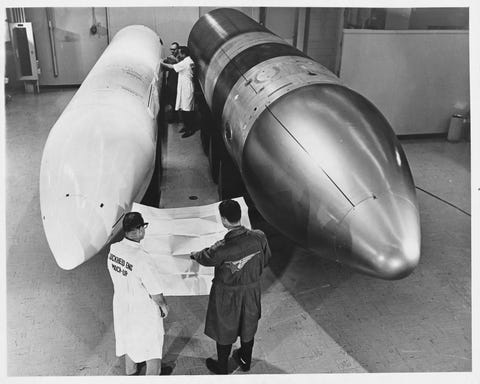
In 1967 at the height of the U.S.–Soviet nuclear arms race, the U.S. nuclear stockpile totaled 31,255 weapons of all types. Today, that number stands at just 6,550. Although the U.S. has deactivated and destroyed 25,000 nuclear weapons, their legacy is still very much alive. Nuclear weapons were developed and produced at more than one hundred sites during the Cold War. Cleanup began in 1989, and the Office of Environmental Management has completed cleanup at 91 of 107 nuclear sites, Still, according to the GAO, “but 16 remain, some of which are the most challenging to address.” Those sites include Lawrence Livermore National Laboratory in California, the Hanford site in Washington, and the Nevada National Security Site.
Near site of Fukushima nuclear disaster, a shattered town and scattered lives
NAMIE, Japan — Noboru Honda lost 12 members of his extended family when a tsunami struck the Fukushima prefecture in northern Japan nearly eight years ago. Last year, he was diagnosed with cancer and initially given a few months to live.
Today, he is facing a third sorrow: watching what may be the last gasps of his hometown.
For six years, Namie was deemed unsafe after a multiple-reactor meltdown at the Fukushima Daiichi Nuclear Power Plant following a 2011 earthquake and tsunami. In March 2017, the government lifted its evacuation order for the center of Namie. But hardly anyone has ventured back. Its people are scattered and divided. Families are split. The sense of community is coming apart.
LANL’s New Director Discusses Changing Culture
BY REBECCA MOSS | santafenewmexican.com
Three months into his tenure as the 12th director of Los Alamos National Laboratory, Thomas Mason acknowledged that fixing the lab’s problems is going to take time, and setbacks could prevent Los Alamos from meeting key nuclear production goals.
But Mason said transforming the lab’s culture to one in which success is replicated — department to department, day after day — is the key to long-term success.
“The most important thing is to become more of a learning organization — where we can take practices [that work] and move them from one part of the organization to the next, and we can respond to stuff that happens … in a way that gets better over time,” Mason said in a recent interview.
“It is tricky,” he added. “There are 12,000 people who work at the lab every day.”
Russia Pulls Out of I.N.F. Treaty in ‘Symmetrical’ Response to U.S. Move
BY ANDREW E. KRAMER | nytimes.com February 2, 2019
MOSCOW — President Vladimir V. Putin of Russia, in a decision that was widely expected, suspended his country’s observance of a key nuclear arms control pact on Saturday in response to a similar move by the United States a day before.
But adding to a sense that the broader architecture of nuclear disarmament has started to unravel, Mr. Putin also said that Russia would build weapons previously banned under the treaty and would no longer initiate talks with the United States on any matters related to nuclear arms control.
The Trump administration withdrew from the treaty, a keystone of the late Cold War disarmament pacts known as the Intermediate-Range Nuclear Forces Treaty, saying that Russia had been violating it for years. The decision holds the potential to initiate a new arms race, not only with Russia, but also China, which was never a signatory to the 1987 treaty.
The U.S. And Russia Are Stocking Up On Missiles And Nukes For A Different Kind Of War
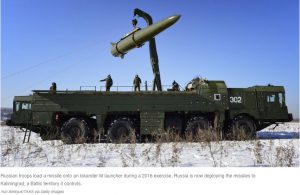
NPR, February 1, 2019, 6:07 AM ET By GEOFF BRUMFIEL
The true battle over these new weapons may end up in Congress. While Republicans seem ready to back the Trump administration’s request for more battlefield nukes, the newly elected Democratic majority in the House of Representatives seems intent on blocking them.
“We do not view nuclear weapons as a tool in warfare,” Adam Smith, now the Democratic chair of the House Armed Services Committee, said in a speech in November. “It makes no sense for us to build low-yield nuclear weapons.”
Trump makes it official: The US is pulling out of a Cold War-era nuclear weapons treaty with Russia
The world’s two greatest nuclear powers are set to pull out of a crucial nuclear weapons treaty beginning this weekend. The Intermediate-Range Nuclear Forces Treaty, prohibits the production or testing of ground-launched cruise missiles with a range of 300 to 3,400 miles.
Trump says the U.S. will withdraw from the INF Treaty on Saturday.
BY AMANDA MACIAS | @amanda_m_macias | cnbc.com February 1, 2019
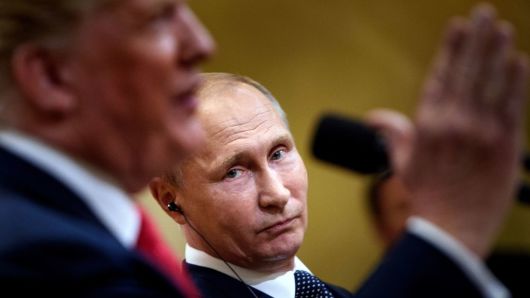
Russia’s President Vladimir Putin listens while U.S. President Donald Trump speaks during a press conference in Helsinki, Finland.
WASHINGTON — President Donald Trump said Friday that the United States is ready to withdraw from a crucial nuclear weapons treaty with Russia on Saturday, a move that has sparked concerns of a budding arms race between the world’s two biggest nuclear powers.
The announcement comes a day after Russia and the United States said that discussions to save the Intermediate-Range Nuclear Forces Treaty had failed.
“Tomorrow, the United States will suspend its obligations under the INF Treaty and begin the process of withdrawing … which will be completed in six months unless Russia comes back into compliance by destroying all of its violating missiles, launchers, and associated equipment,” Trump said in a statement.
MERKLEY, SENATORS INTRODUCE BILL TO PREVENT NUCLEAR ARMS RACE
 merkley.senate.gov Thursday, January 31, 2019 WASHINGTON, D.C.
merkley.senate.gov Thursday, January 31, 2019 WASHINGTON, D.C.
“There’s a reason that kids today don’t do duck-and-cover drills in schools and that nobody has bomb shelters in their backyards anymore. That reason is because of key agreements like the Intermediate-Range Nuclear Forces Treaty and the New Strategic Arms Reduction Treaty,” said Merkley. “This era of stability is put at great risk by President Trump’s decision to unilaterally pull out of the INF Treaty. This decision ignores all the lessons from the Cold War. There is no doubt that Russia is violating the INF Treaty, but the right path forward is to work to bring them back into compliance, not free them to produce more nuclear weapons. Blowing up the Treaty risks the proliferation of nuclear-capable systems by Russia, threatening Europe and jeopardizing decades of bipartisan efforts to reduce nuclear dangers with Russia.”
“A nuclear arms race would endanger the entire world and threaten every single person in our country, and Congress has a responsibility to ensure that President Trump does not start one. President Trump’s imminent unilateral withdrawal from a bipartisan weapons treaty with Russia, without consulting Congress, would mean the Prevention of Arms Race Act is more important than ever,” said Gillibrand. “A reckless withdrawal would further damage our relationships with our allies, Russia would not be legally constrained from deploying larger numbers of their previously prohibited missiles, and the world would be much less safe. I urge my colleagues to support this bill to prevent a new arms race, and I will continue to do everything I can to keep all Americans safe.”
“Pulling out of the INF Treaty plays squarely into Russia’s hands while undermining America’s security and betraying our NATO allies,” Markey said. “The Trump administration needs to work more closely with our NATO allies to force Russia back into compliance. And as the chance of a confrontation between American and Chinese forces rises the Indo-Pacific, it makes little sense to add further ambiguity over whether U.S. missiles stationed around the region are nuclear-armed. This legislation will help ensure that we don’t match two major adversaries missile-for-missile, trigger a new nuclear arms race, and incur unacceptable amounts of risk in an already tenuous security environment.”
“If Donald Trump walks out of the INF Treaty, he will risk a new destabilizing and costly arms race and antagonize important allies,” said Wyden. “The administration should instead be working with European allies to pressure Russia back into compliance.”
The Senators’ legislation comes in advance of the Trump Administration’s expected action this weekend to unilaterally withdraw the United States from the Intermediate-Range Nuclear Forces Treaty (INF) treaty. The State Department set a February 2, 2019 deadline for Russia to return to compliance with the Treaty after a hasty and un-vetted declaration by President Trump in October that the United States intended to withdraw from the landmark treaty with Russia. The INF was originally signed by President Reagan and Soviet General Secretary Mikhail Gorbachev in 1987.
Opponents fight back against WIPP permit change on waste volume tracking, appeal filed
“Scott Kovac of Nuclear Watch New Mexico said the change should not have been approved without an explanation from the DOE about how to address lost space after a contamination incident in 2014 that led to a three-year closure of the facility.”
By Adrian Hedden Carlsbad Current-Argus
Two advocacy groups in New Mexico filed a legal appeal Thursday seeking to undo a New Mexico Environment Department order that allows the Energy Department to change the way it records underground transuranic waste volume at its Waste Isolation Pilot Plant (WIPP) near Carlsbad.
The Southwest Research and Information Center (SRIC) and Nuclear Watch New Mexico (NWNM) filed their notice of appeal in the New Mexico Court of Appeals to block the modification to WIPP’s state hazardous waste permit.
While it technically takes effect this month, as a practical matter the new counting system won’t be instituted right away because DOE has not drafted its policy on implementation, said SRIC Administrator Don Hancock by email.
A Dec. 21 order from then-state Environment Department Secretary Butch Tongate authorized DOE to stop recording empty spaces between container drums as waste. The order adopted the findings of state Hearing Officer Max Shepherd, who recommended waste volume counted against the disposal cap set by the 1992 WIPP Land Withdrawal Act should cover only the actual waste inside containers.
“The modification is contrary to federal law, changes 20 years of practice in the WIPP Permit and operations, ignores the record in the proceeding including testimony in three days of hearings, and violates the New Mexico-DOE Consultation and Cooperation Agreement,” Hancock said in a press release.
He called on New Mexico’s new governor and environment chief not to back the change in court, but rather overturn it. Given the official implementation date is Jan. 20, any administrative delay or rejection would happen soon, he added.
NV Governor and AG speak against DOE plutonium shipment
See video of news conference by governor & attorney general of Nevada, angry about DOE’s secret shipment of plutonium from SRS to NV, with SRS Watch comments: https://www.kolotv.com/content/news/505096611.html
Filings by State of Nevada in Nevada district court, in plutonium shipment docket (3:18-cv-00569), January 31, 2019:
PLAINTIFF’S MOTION FOR A TEMPORARY
RESTRAINING ORDER
(REQUEST FOR RULING BY JANUARY 31, 2019)
PLAINTIFF’S STATUS REPORT
PLAINTIFF’S MOTION FOR A STATUS HEARING
energy.gov | WASHINGTON D.C. – The Department of Energy’s National Nuclear Security Administration (DOE/NNSA) is committed to protecting the health, safety, and security of the public at all of our sites as we conduct our important national security missions. The recent plutonium shipments to the Nevada National Security Site were undertaken to comply with an order issued by the U.S. District Court in South Carolina.
It is inaccurate to state that the Members of the Nevada delegation were not informed of this movement. The Department of Energy was as transparent as operational security would permit. Efforts were made to ensure that Members of Congress representing the states involved were notified of the planned movement ahead of time, as early as August 2018 when NNSA publicly released the plan in a Supplement Analysis. Since then, NNSA confirmed that it was “actively engaged” in removing one metric ton of plutonium from South Carolina to Nevada, Texas, and New Mexico.**
It is also inaccurate to characterize this material as “waste”. This material is essential for maintenance of the U.S. weapons stockpile, and is handled with the highest standards for safety and security. NNSA routinely ships this type of material between its sites as part of our national security missions and has done so safely and securely for decades.
###
**Aiken Standard, “NNSA: Weapons-grade plutonium will be moved out of SC this year, next year” www.aikenstandard.com
Russia & China Will Join Forces on Nuclear Weapons Strategy as U.S. Threatens to Leave Arms Deal
Russia and China are boosting bilateral cooperation on nuclear weapons strategies as they accused the United States of disrupting non-proliferation measures during a high-level meeting of the top five nuclear powers.
BY TOM O’CONNOR | newsweek.com January 30th, 2019
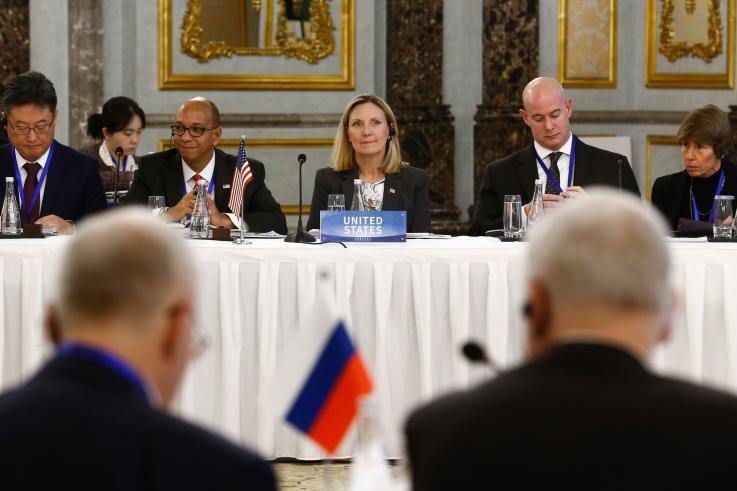
Representatives of the so-called “Nuclear Five” met Wednesday in Beijing, at a time of heightened tensions between the Eastern and Western permanent members of the United Nations Security Council. The grouping included China, France, Russia, the United Kingdom and the U.S., signatories of the Treaty on the Non-Proliferation of Nuclear Weapons (NPT), a landmark document that sought to curb the spread of weapons of mass destruction during a decades-long arms race between Washington and Moscow.
As the White House threatened to scrap another Cold War-era weapons treaty, China and Russia have sought to align their approach in the face of what they considered to be a destabilizing U.S. position.
“Issues of our cooperation and Chinese-Russian and Russian-Chinese coordination will surely be the focus of our attention,” Russian Deputy Foreign Minister Sergey Ryabkov said, according to the state-run Tass Russian News Agency. “It is very productive work. In 2016, we approved the statement on strategic stability at the level of the leaders. It is just an example of how Russia and China are registering joint common positions more precisely.”
The U.S. has accused Russia of violating the 1987 Intermediate-range Nuclear Forces (INF) treaty, which established a mutual ban on ground-launched nuclear and conventional missiles within the ranges of around 310 and 3,420 miles. Washington argues that Russia’s new Novator 9M729 missile violates the treaty, while Moscow claims that the extensive U.S. missile shield in Europe could be used offensively as well, effectively breaching the deal.
Chairman Smith, Senator Warren Introduce Bill Establishing “NO FIRST USE” Policy for Nuclear Weapons
 armedservices.house.gov | WASHINGTON DC January 30th, 2019
armedservices.house.gov | WASHINGTON DC January 30th, 2019
Today, Representative Adam Smith (D-WA), Chairman of the House Armed Services Committee, and United States Senator Elizabeth Warren (D-MA), a member of the Senate Armed Services Committee, introduced the bicameral No First Use Act, to establish in law that it is the policy of the United States not to use nuclear weapons first.
Today the United States explicitly retains the option to be the first to use nuclear weapons in a conflict, even in response to a non-nuclear attack. The No First Use Act would codify what most Americans already believe—that the United States should never initiate a nuclear war.
“Our current nuclear strategy is not just outdated—it is dangerous,” said the lawmakers in a joint statement. “By making clear that deterrence is the sole purpose of our arsenal, this bill would reduce the chances of a nuclear miscalculation and help us maintain our moral and diplomatic leadership in the world.”
The No First Use Act would strengthen U.S. national security by:
– Reducing the risk of a nuclear miscalculation by an adversary during a crisis
– Strengthening our deterrence and increasing strategic stability by clarifying our declaratory policy
– Preserving the U.S. second-strike capability to retaliate against any nuclear attack on the U.S. or its allies
Since there has been no public release by the National Nuclear Security Administration (NNSA) of an outline of plans about activities to shutter the Mixed Oxide Fuel Fabrication Facility (MFFF) at DOE’s Savannah River Site (SRS) in South Carolina, the public remains in the dark about MOX closure plans. A Freedom of Information Act request has been filed by Savannah River Site Watch (SRS Watch) for the “Statement of Work” that DOE has contracted with Savannah River Nuclear Solutions for project closure.
Trump is Fixating on Another ‘Wall’ That Will Almost Certainly Fail to Live Up to his Promises
BY THE TIMES EDITORIAL BOARD | latimes.com
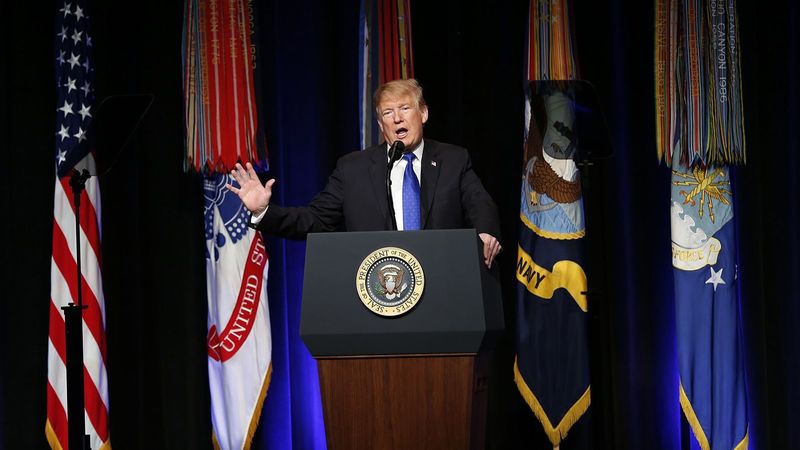
In 1983, in what came to be known as his “Star Wars” speech, President Ronald Reagan unveiled an ambitious vision for a missile defense system that would render the need for traditional nuclear deterrence unnecessary. Reagan asked: “What if free people could live secure in the knowledge that their security did not rest upon the threat of instant U.S. retaliation to deter a Soviet attack, that we could intercept and destroy strategic ballistic missiles before they reached our own soil or that of our allies?”
The “Star Wars” label proved prophetic, because Reagan’s vision of an impermeable shield that would deflect incoming nuclear missiles proved to be the stuff of science fiction. Missile defense has achieved modest successes, but it also has been marked by embarrassing failures.
Comment by the Information and Press Department on Space-based Elements Outlined in the US Missile Defence Review
mid.ru | We have taken note that in the US Missile Defence Review (MDR) published on January 17, a serious emphasis is placed on the formation of a space-based missile defence group, including missile interceptors. Deployment of such systems in space is ostensibly designed to make it easier to destroy different types of missiles in the boost phase over enemy territory. To achieve this, the US Defence Department has been instructed to study the most advanced technology, as well as draw up a time schedule, costs and personnel requirements.
We consider this to be further evidence (on a par with the decision to create space-based armed forces and the allocation of funds for the development of space-based missile defence) of Washington’s real intention to use outer space for combat operations and ensuring US domination in space in the near future. We are deeply disappointed that instead of developing constructive dialogue on the issues of strategic stability and preventing an arms race in space the US preferred to return to the implementation of yet another version of Ronald Reagan’s Star Wars programme.
A new abnormal: It is still 2 minutes to midnight
Humanity now faces two simultaneous existential threats, either of which would be cause for extreme concern and immediate attention. These major threats—nuclear weapons and climate change—were exacerbated this past year by the increased use of information warfare to undermine democracy around the world, amplifying risk from these and other threats and putting the future of civilization in extraordinary danger.
There is nothing normal about the complex and frightening reality just described.
Doomsday Clock Stays at Two Minutes to Midnight as Crisis Now ‘New Abnormal’
Warning that ‘We are like passengers on the Titanic, ignoring the iceberg ahead’ in face of nuclear arms and climate change threats

BY JULIAN BORGER in Washington | – theguardian.com |
The risk to global civilisation from nuclear weapons and climate change remains at an all-time high, according to a group of prominent US scientists and former officials, who said the world’s predicament had become the “new abnormal”.
The Bulletin of the Atomic Scientists announced that its symbolic “doomsday clock”, unveiled every year, was stuck at two minutes to midnight, the same as last January. The only other time the Bulletin has judged the world as being this close to catastrophe was 1953, in the early volatile stages of the cold war.
The reasons given by the Bulletin’s panel of experts included the collapse of arms control treaties, and the emphasis in Washington and Moscow on modernising nuclear arsenals rather than dismantling them, and the lack of political will to reverse climate change.
“We are like passengers on the Titanic, ignoring the iceberg ahead, enjoying the fine food and music,” said Jerry Brown, the former governor of California, said. Since leaving office this month, Brown has become the Bulletin’s executive chairman, citing the imminent threats to humanity. “It’s late and it’s getting later. We have to wake people up. And that’s what I intend to do!”
Watchdogs Fight WIPP Permit Change
By Rebecca Moss santafenewmexican.com | Jan 17, 2019 Updated Jan 18, 2019
Nuclear watchdog organizations filed an appeal Thursday of a state Environment Department-approved permit change they say could allow for 30 percent more nuclear waste to be held at a Southern New Mexico storage site.
The request for a New Mexico Court of Appeals review of the agency’s decision in December, which alters procedures for measuring the volume of waste at the Waste Isolation Pilot Plant near Carlsbad, was filed on behalf of Nuclear Watch New Mexico and the Southwest Research and Information Center.
The groups allege the permit change violates federal law by allowing plant managers to recalculate the amount of nuclear waste buried underground at WIPP without going through Congress.
The move subtly sidesteps nuclear waste limits outlined under the 1992 Land Withdrawal Act, the groups say.
Nuclear News Archives – 2018
Pence Snubs Peace Initiative at Winter Olympics
Experts have been saying for some time that there is no good military solution to the Korea crisis. The best way to see the crisis defused would, of course, start with a rapprochement of the two Koreas. In fact the State Dept. recently said that the US would have no objection to a unified Korea as long as it was de-nuclearized. So that path was in the wind, but when the two Koreas initiated a peace and reconciliation effort at the Olympics, US Vice President Pence refused to go along.
Pence spent the days leading up to Friday’s opening ceremonies warning that the North was trying to ‘hijack the message and imagery of the Olympic Games’ with its ‘propaganda.’
But the North was still welcomed with open arms to what South Korean President Moon Jae-in called ‘Olympic games of peace’ and the U.S. appeared to be the one left out in the cold.
Pence sat stone-faced in his seat as Moon and North Koreans officials stood together with much of the stadium to applaud their joint team of athletes. White House officials stressed that Pence had applauded only for the American team, but Asia experts said the vice president’s refusal to stand could be seen as disrespectful to the hosts.
While South Korean President Moon did not hesitate to shake hands and smile with his North Korean visitors, Pence didn’t appear to even look in the direction of the North Korean delegation during the Friday event.
Seems the Trump administration would rather threaten than talk.
Pence’s Anti-North Korea PR Campaign Bombs
US Vice-President Mike Pence rains on Olympic parade with Korea team snub
DPRK Develops its Nukes For The Same Reason We Keep Ours: Deterrence
We often hear these days that the North Korean nuclear weapons program is a failure of deterrence. It is not. DPRK’s nuke forces were developed for the same reasons ours exist: to deter another state from attacking it. (In particular, the US.) DPRK’s program is a confirmation of the concept of deterrence.
The concept of deterrence means a state has nuclear weapons so other states dare not attack. As such all states might aspire to develop a deterrent. Our ‘deterrence’ was never meant to prevent states form going nuclear, only to prevent them from attacking us.
Preventing other states from going nuclear was the purpose of the 1968 Non-Proliferation Treaty. The NPT deal was that non-nuclear weapons states would abstain from developing nuclear arsenals in exchange for a promise from the nuclear weapons states to negotiate in good faith to achieve genuine reductions and eventual abolition of nuclear arsenals. The nuclear weapons states have not done that. They still have 15000 nukes. That is the failure.
DPRK’s nuclear development isn’t down to a failure of deterrence but rather a failure of the nuclear weapons states to abide in good faith by the Non-Proliferation Treaty.
NM Senator Martin Heinrich Letter to Sec.Def. Mattis Warning Against “Bloody Nose” Attack on North Korea
“Massive gamble”, “risk of mass casualties and utter devastation”… Urges diplomatic efforts…

